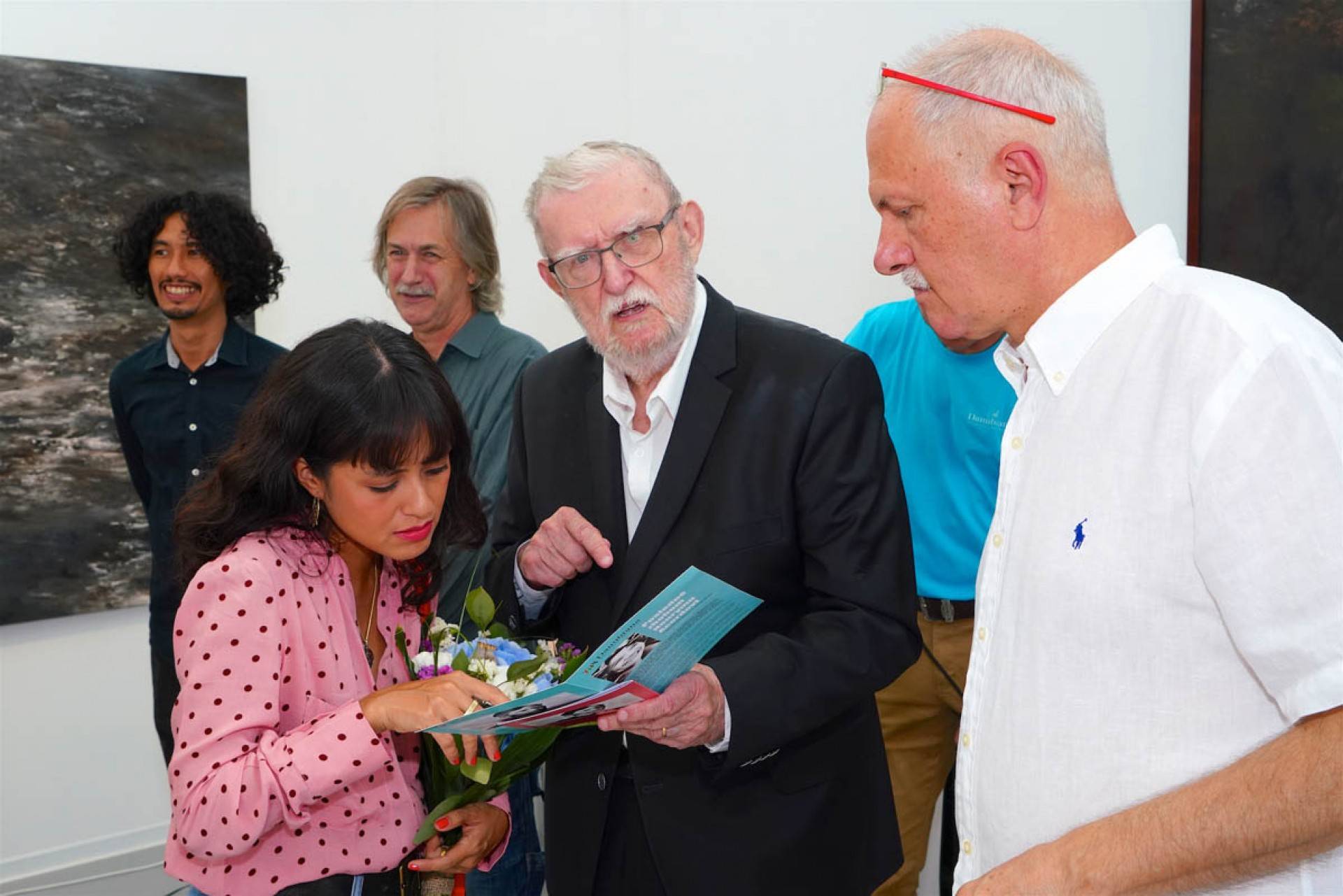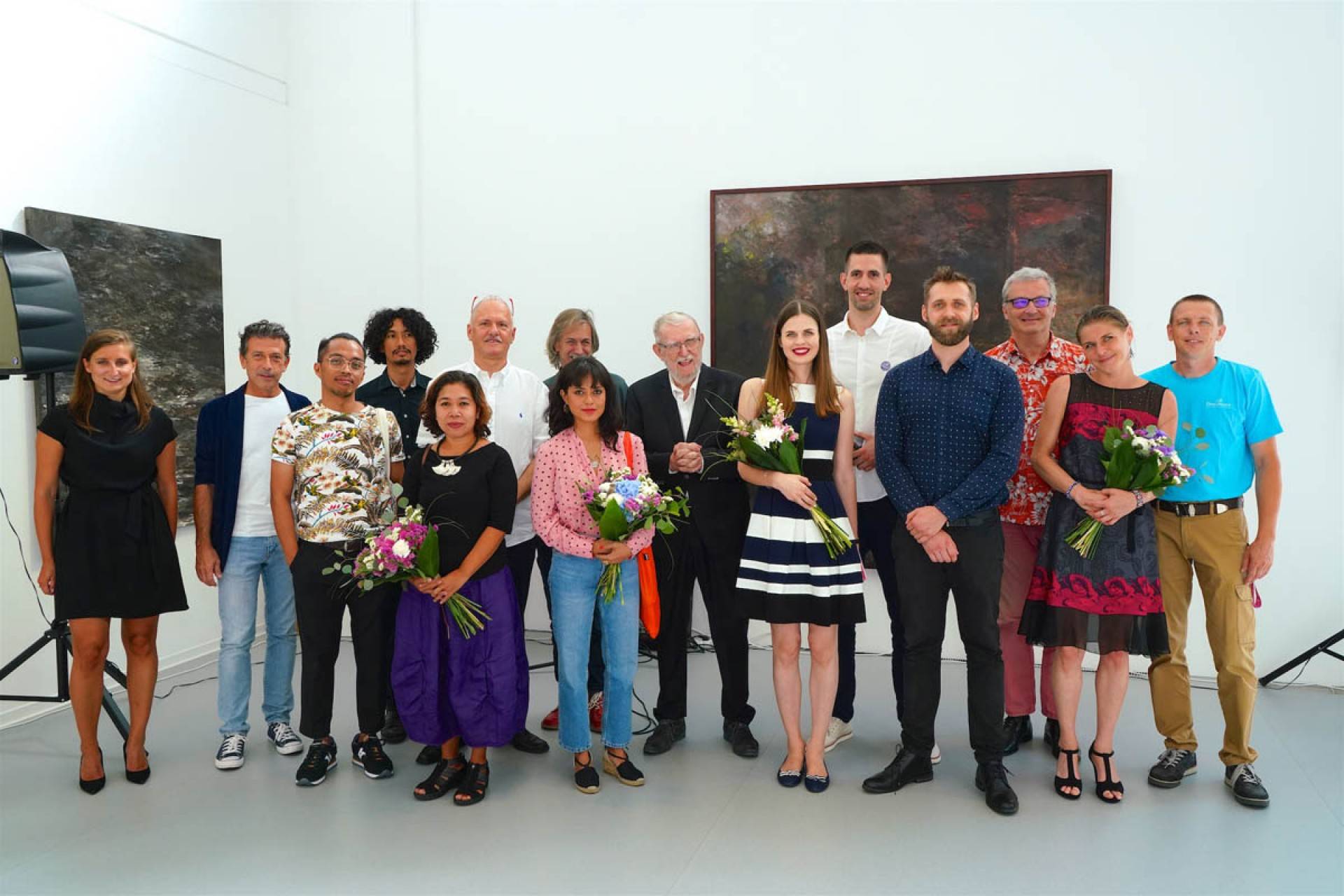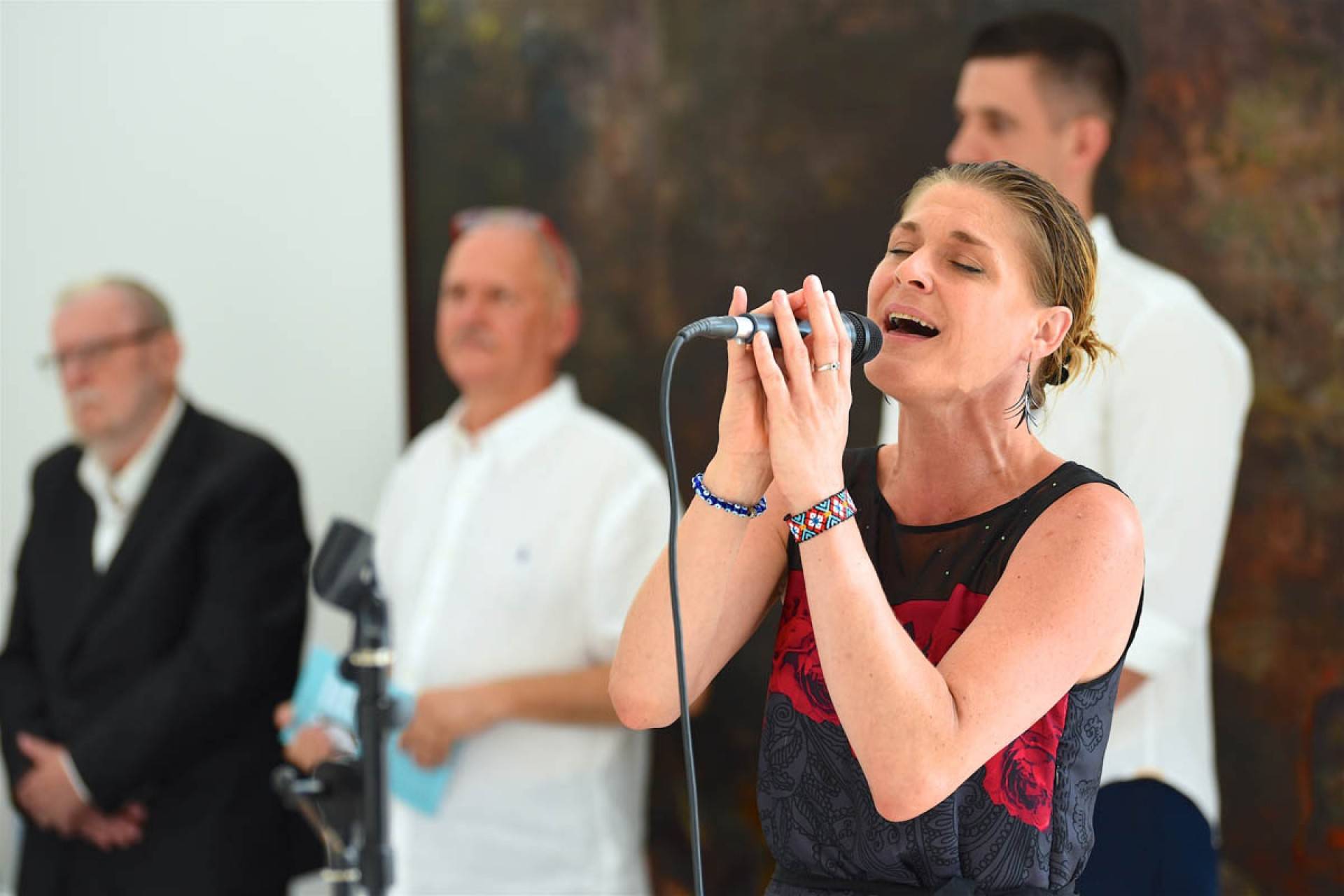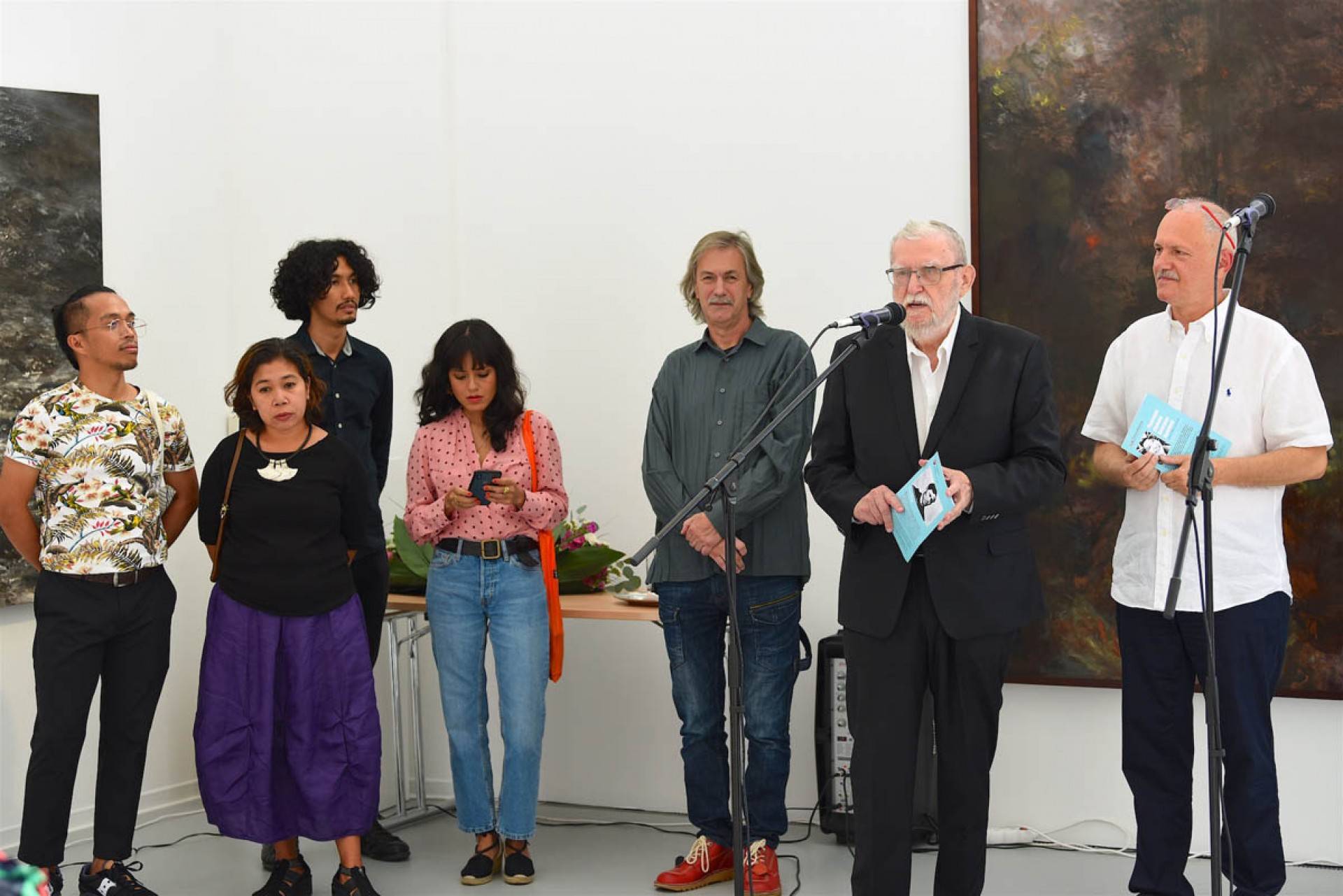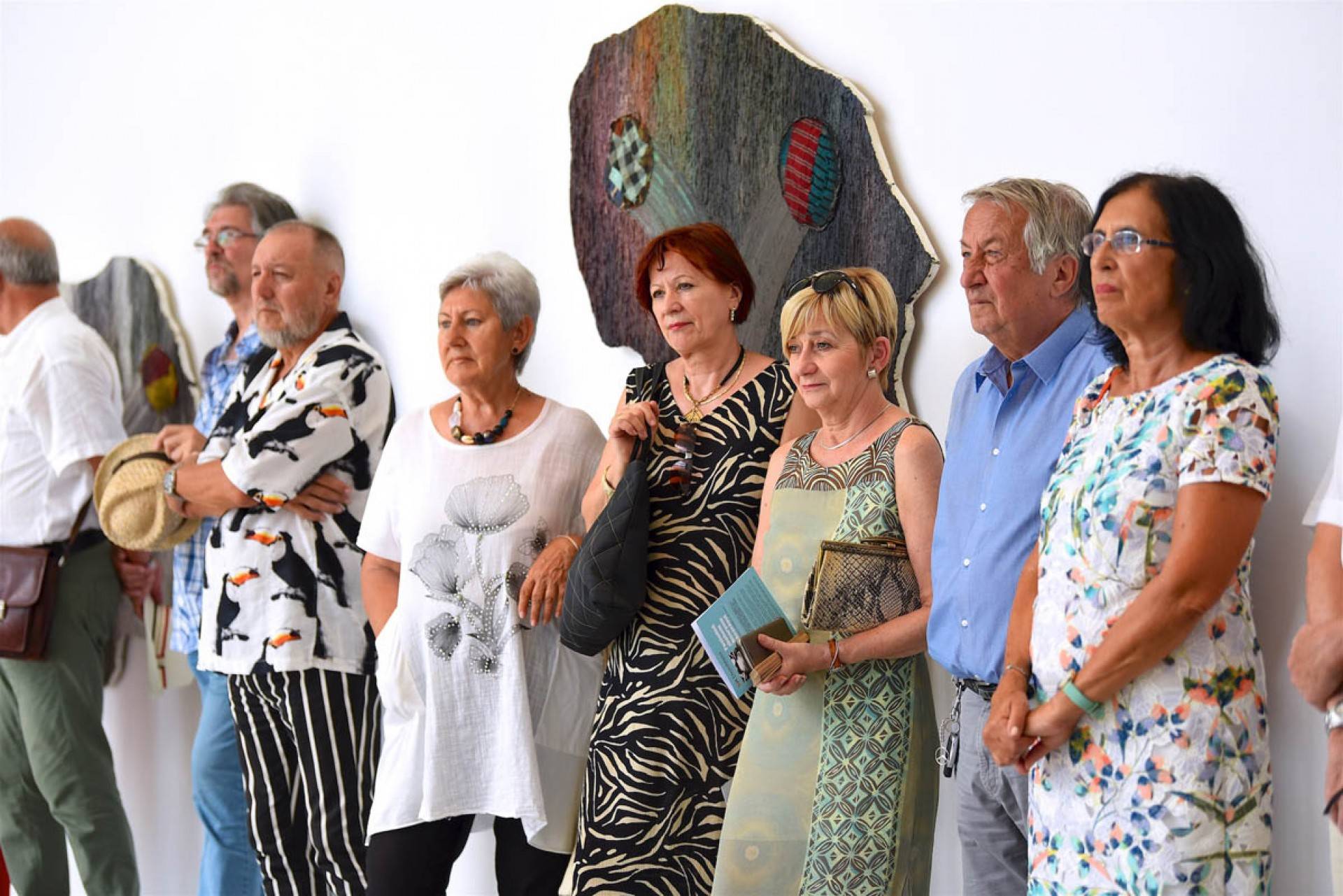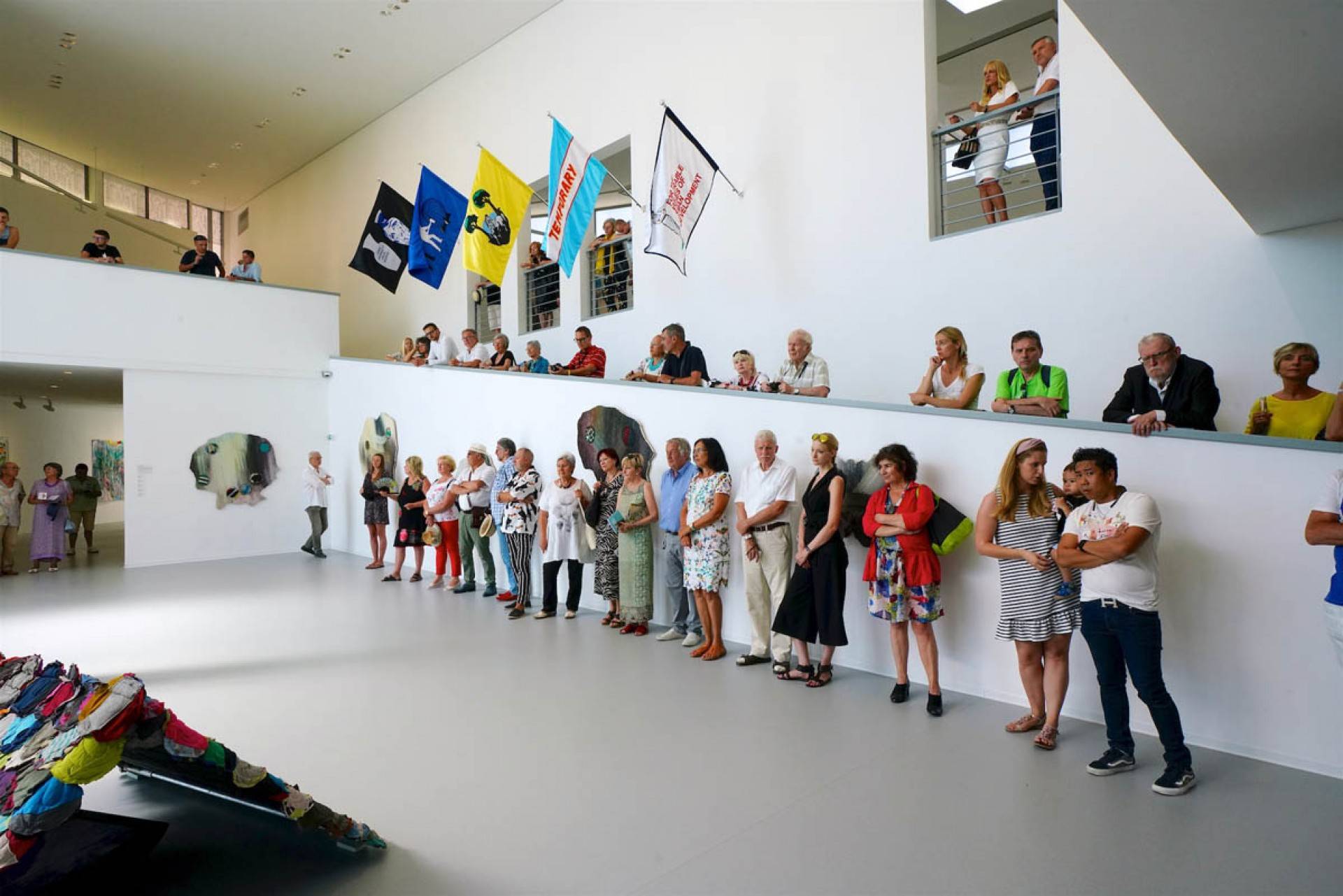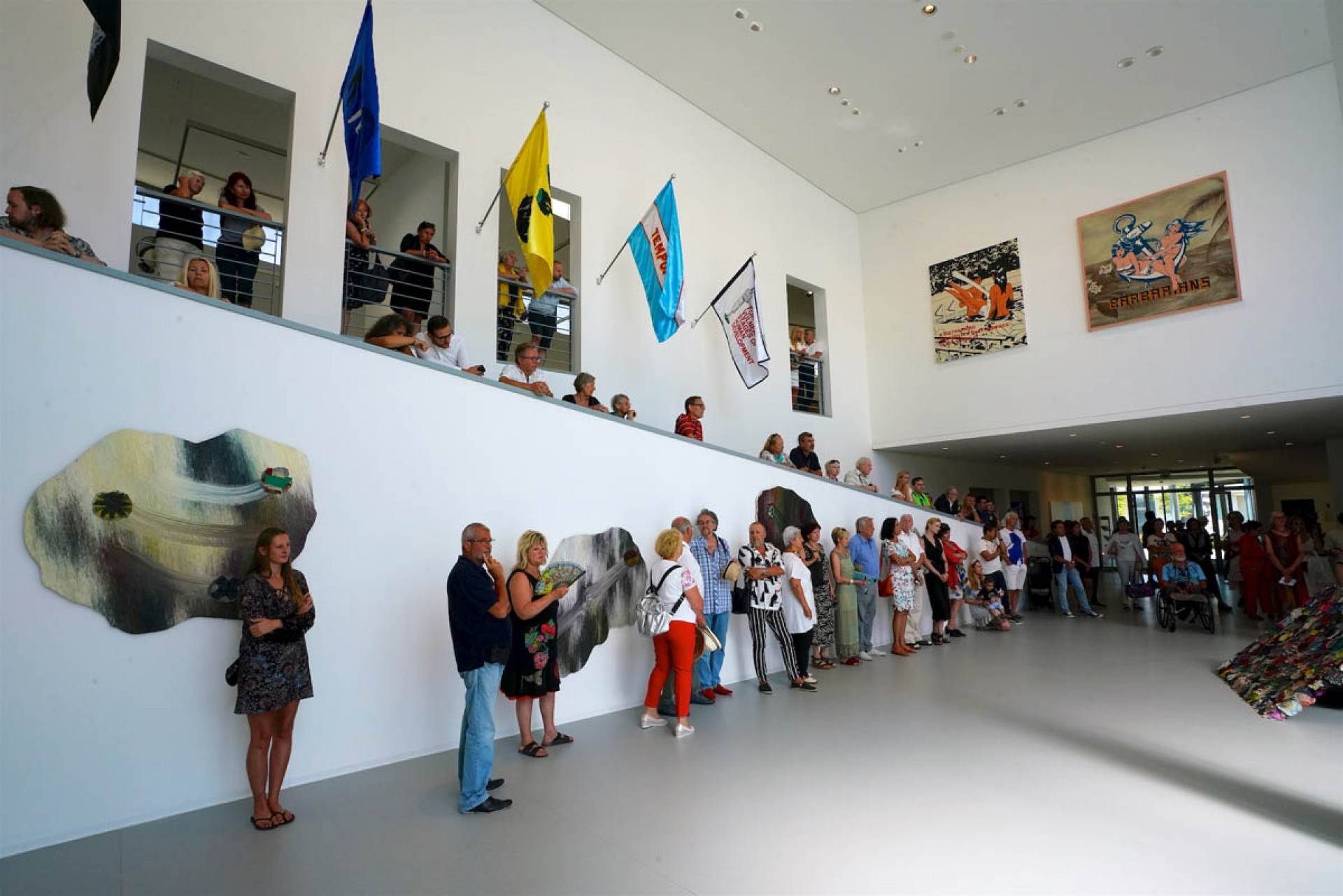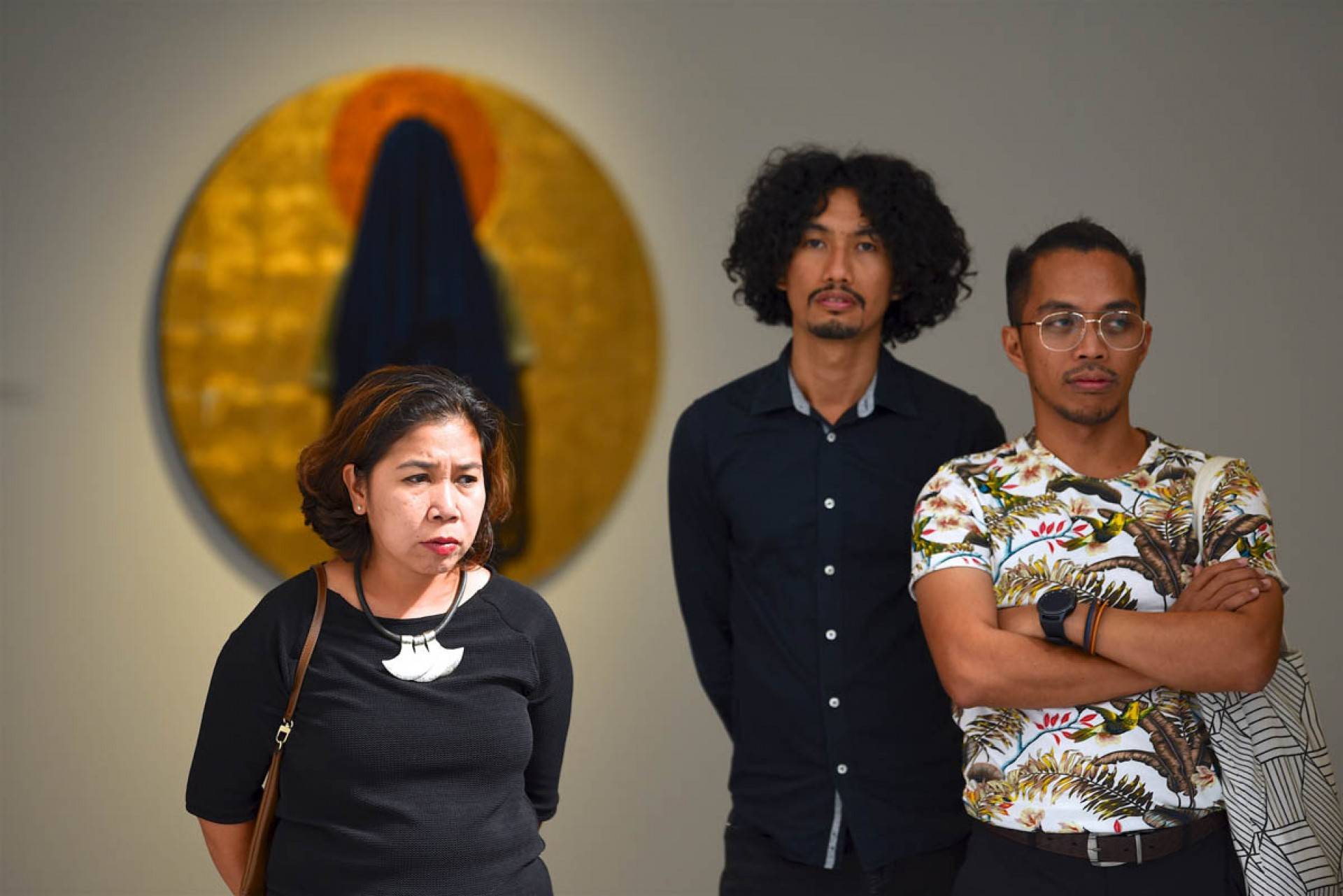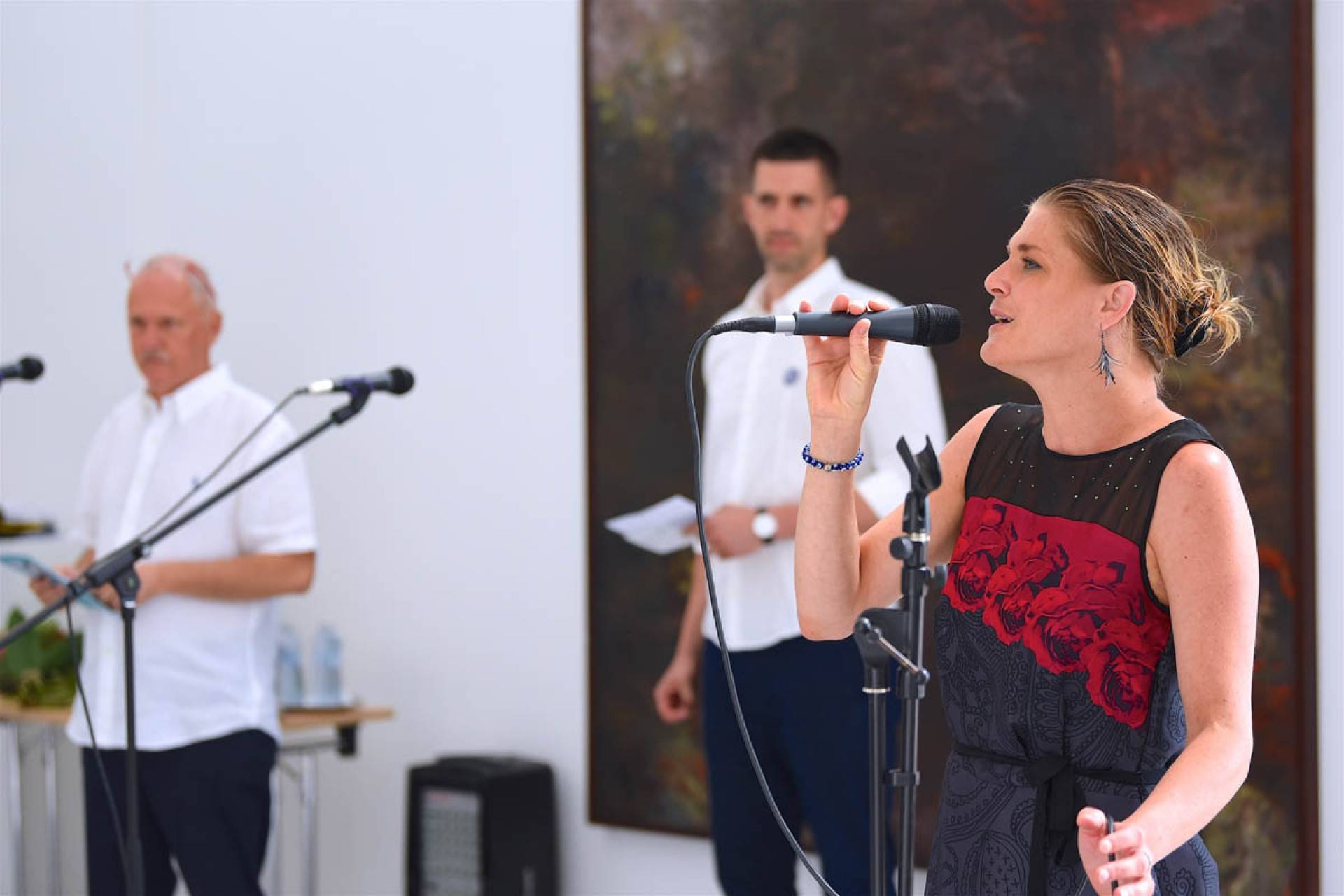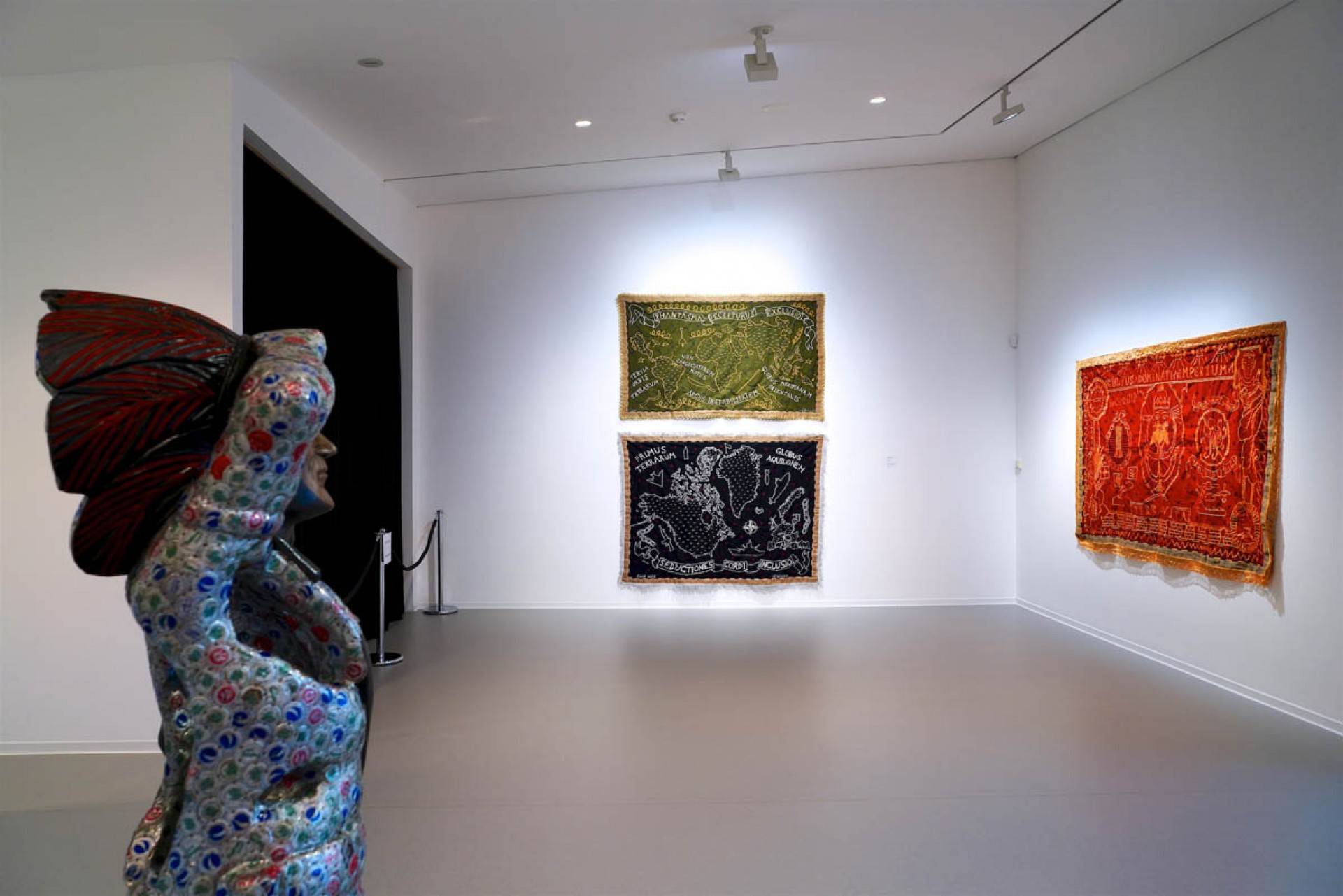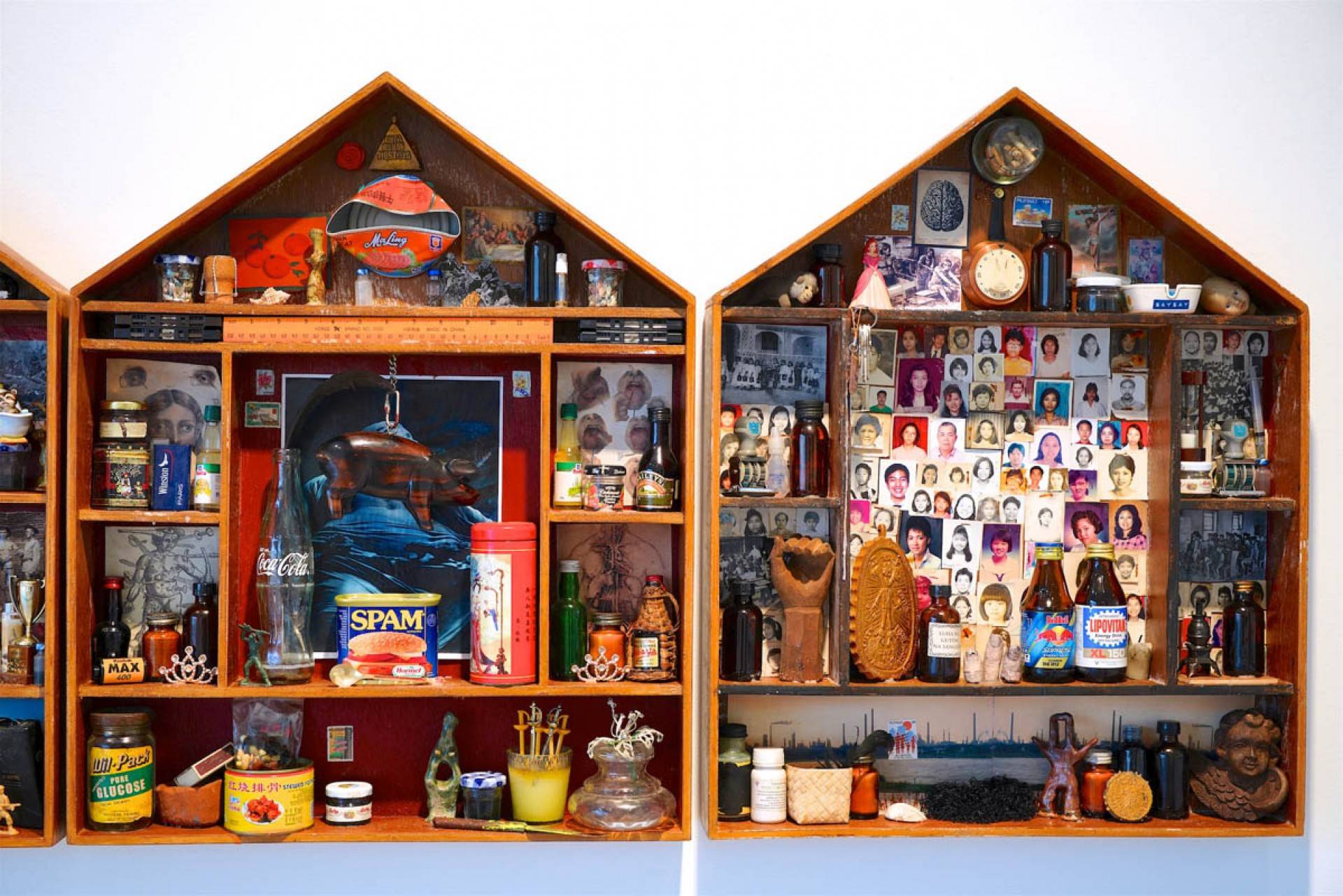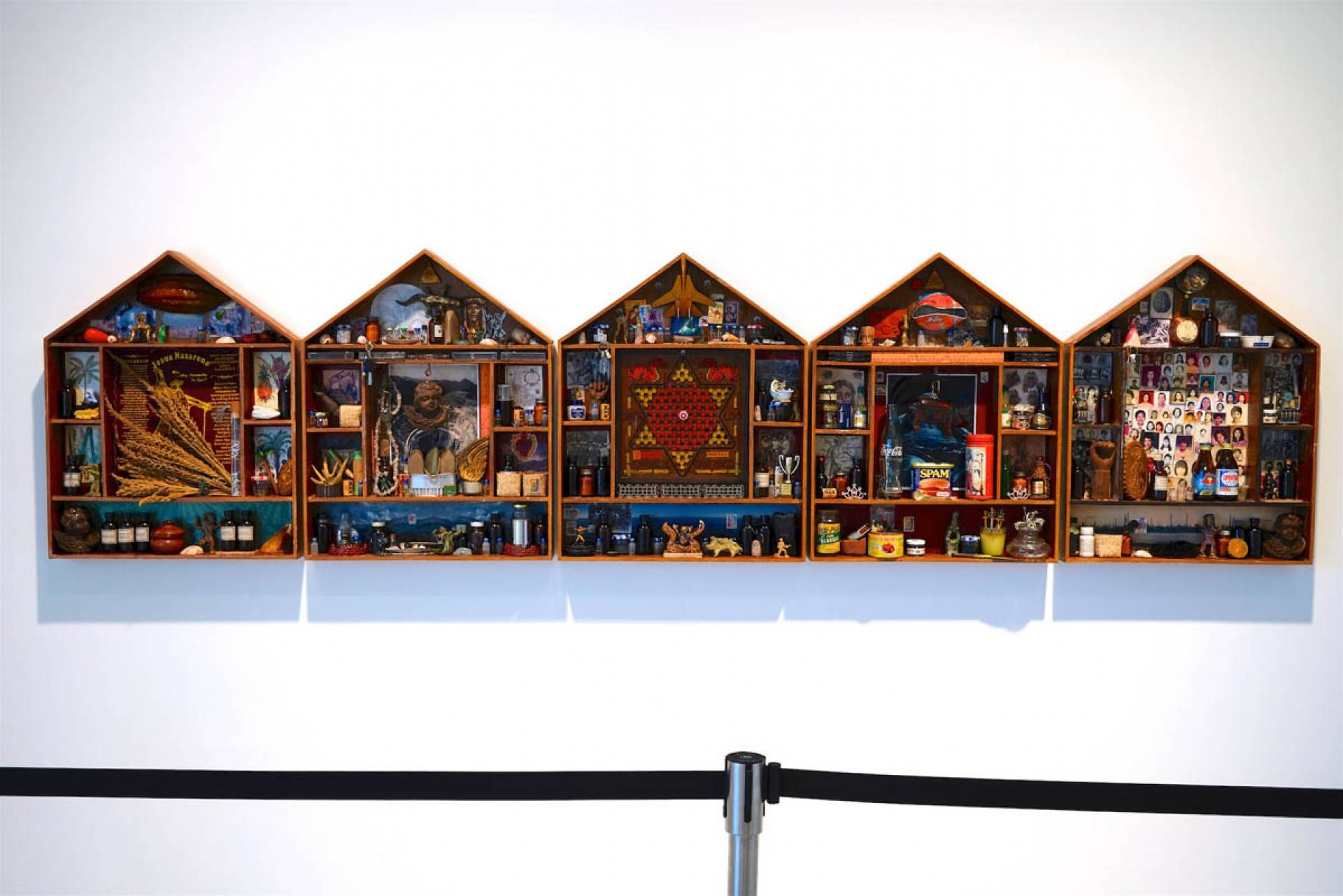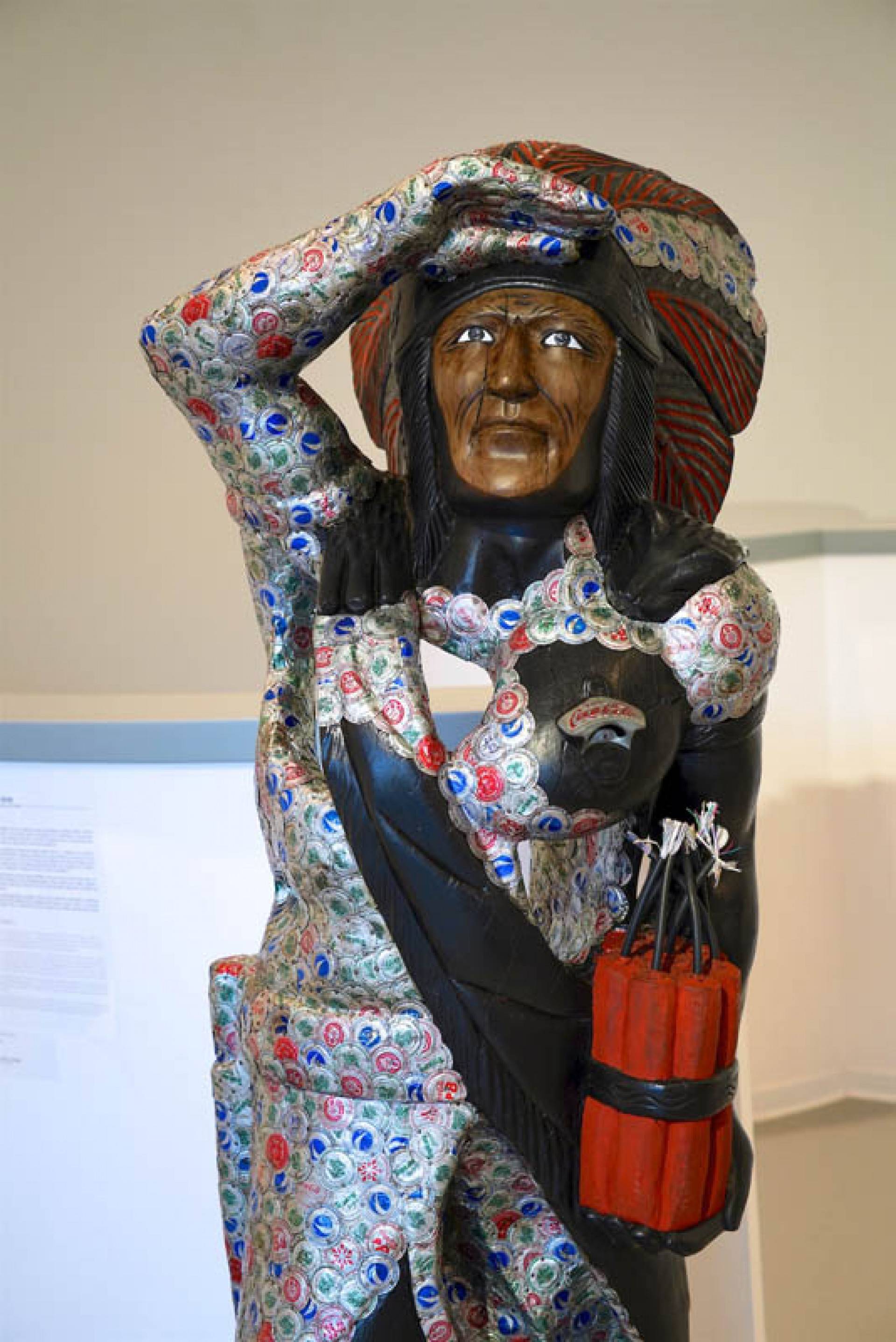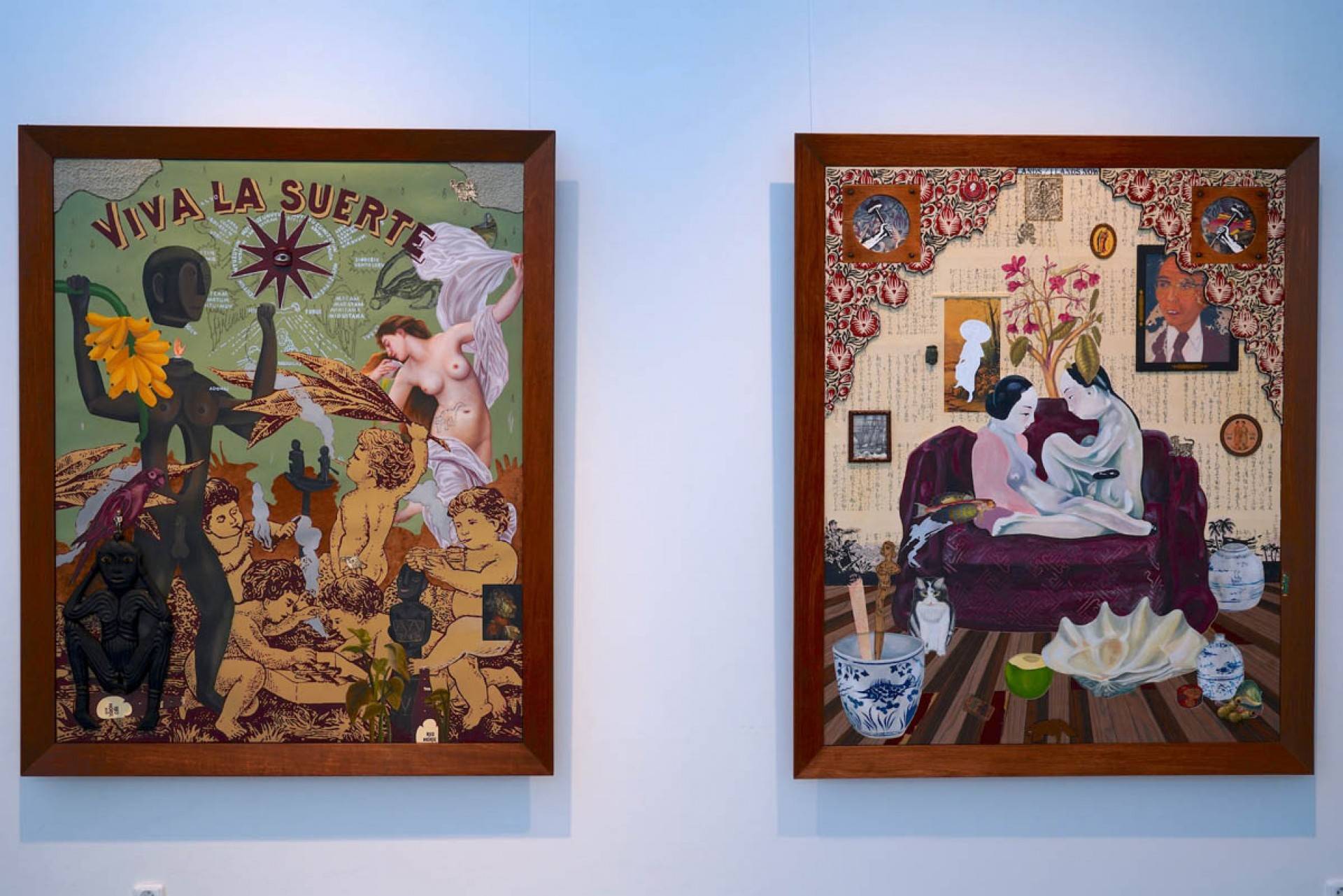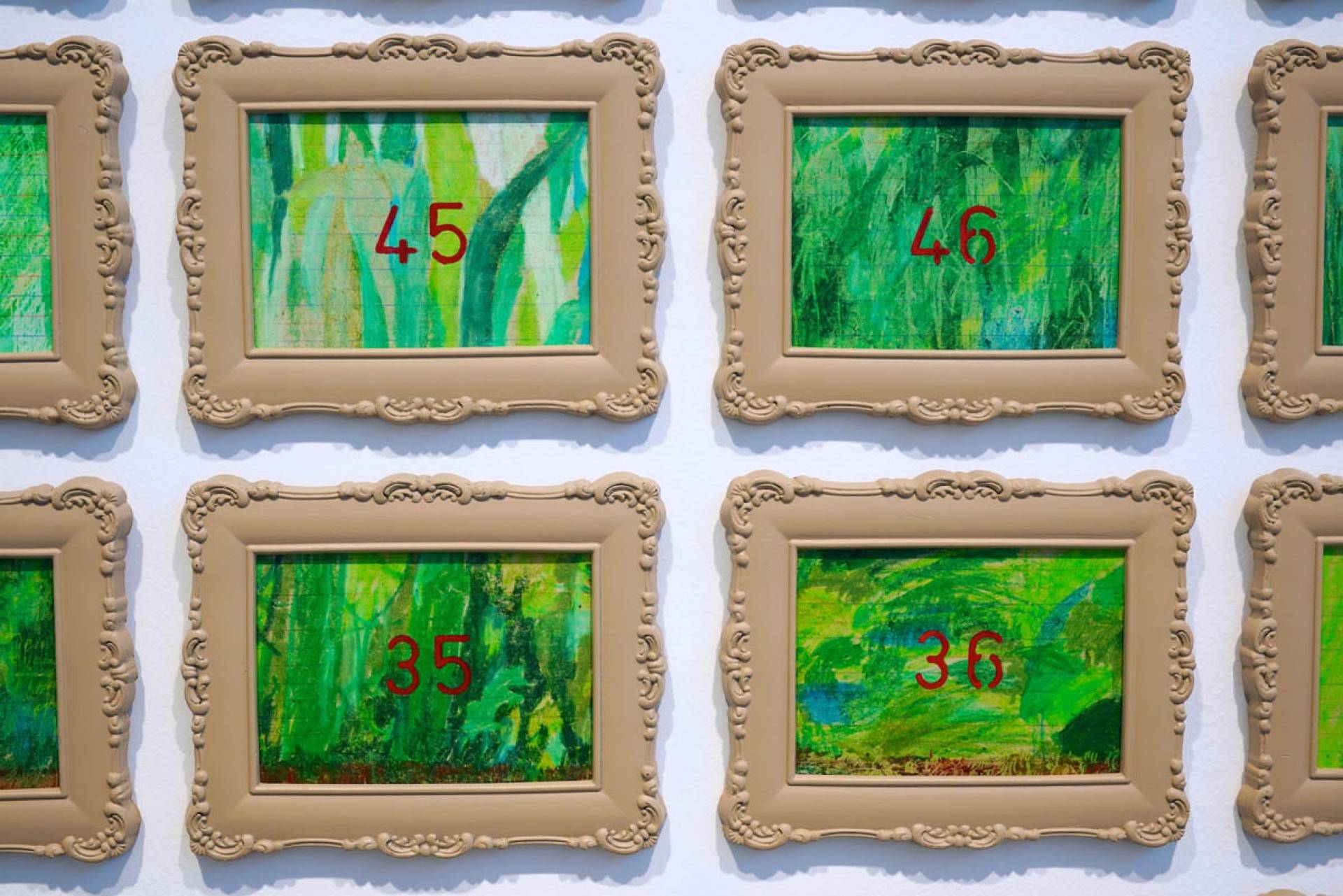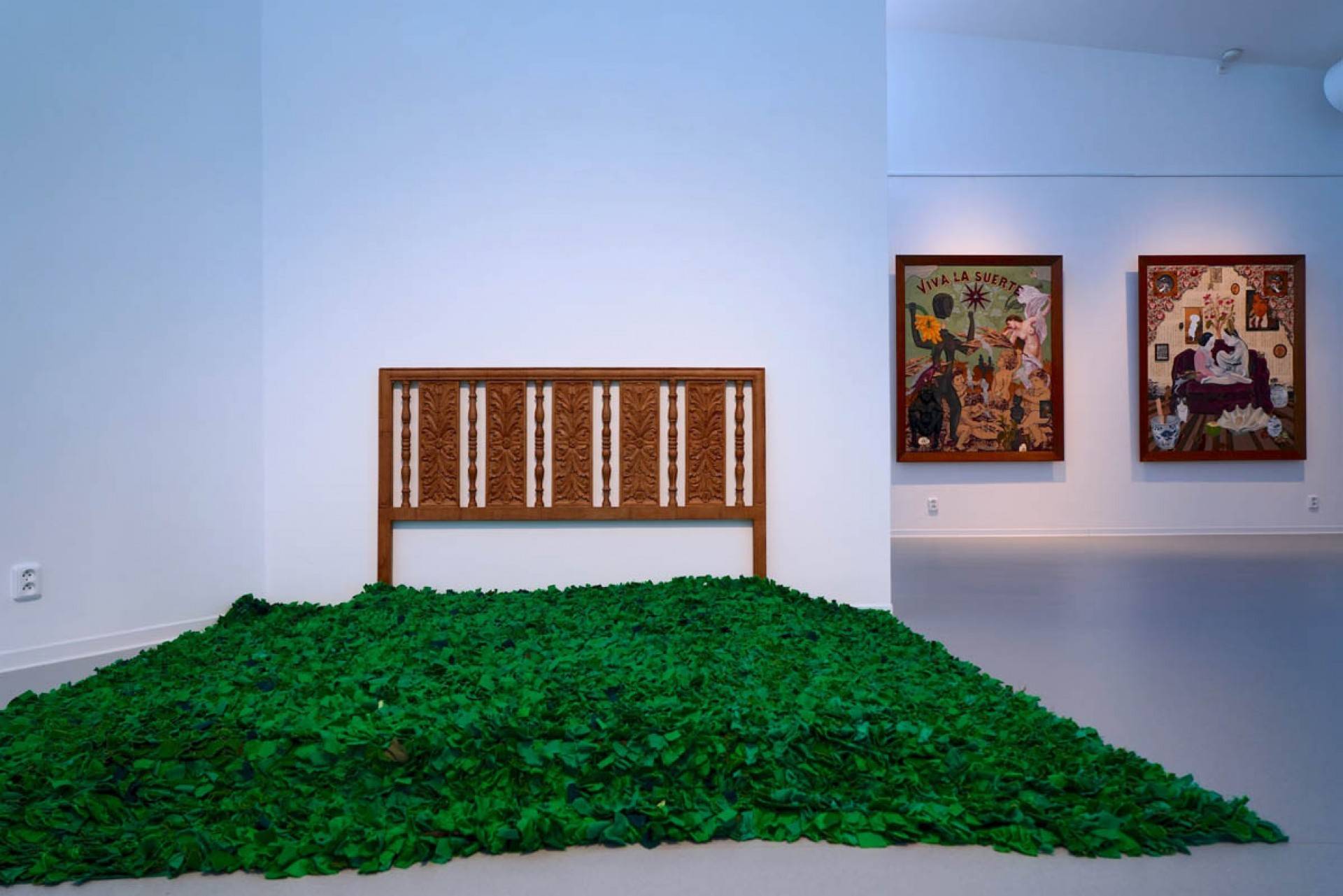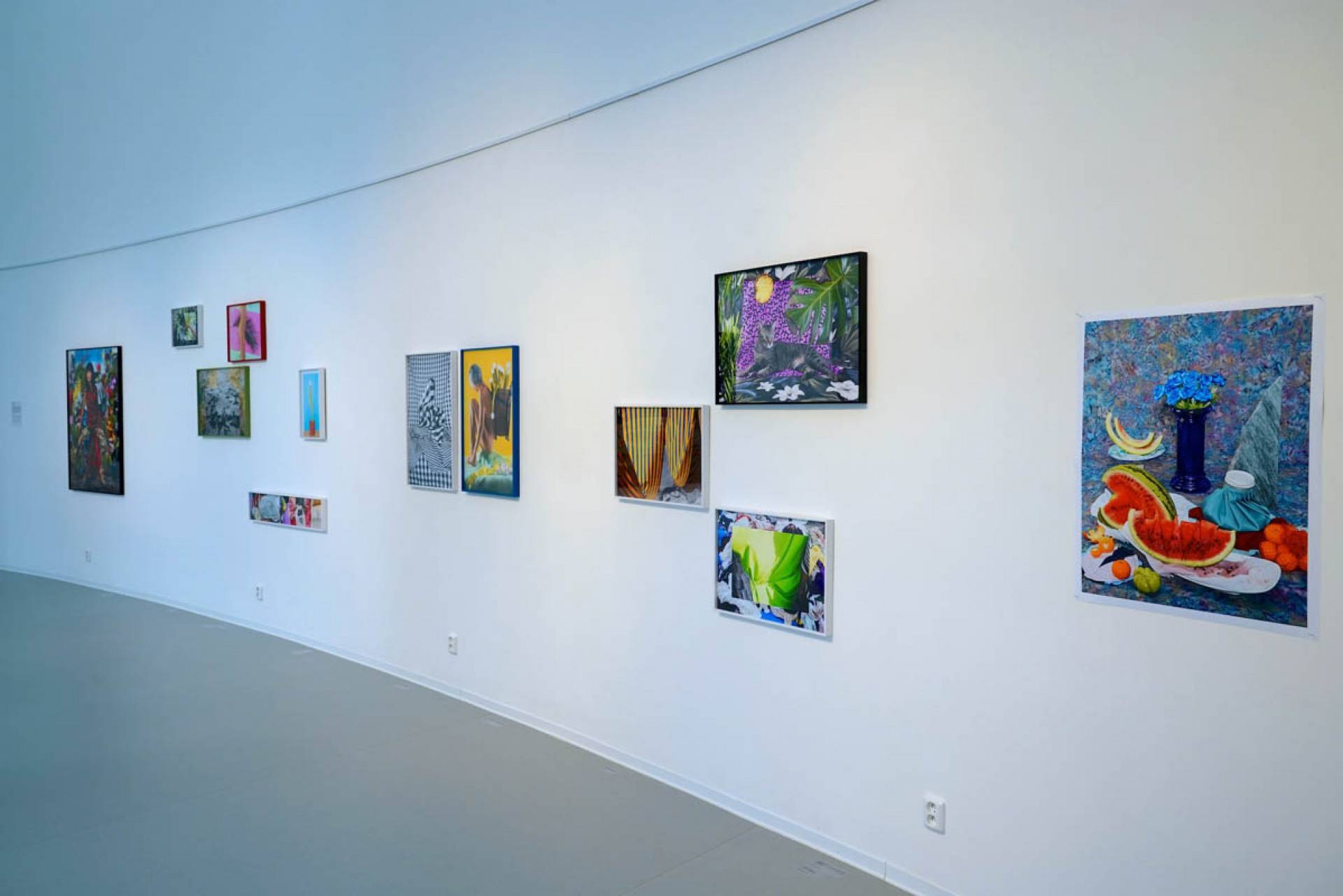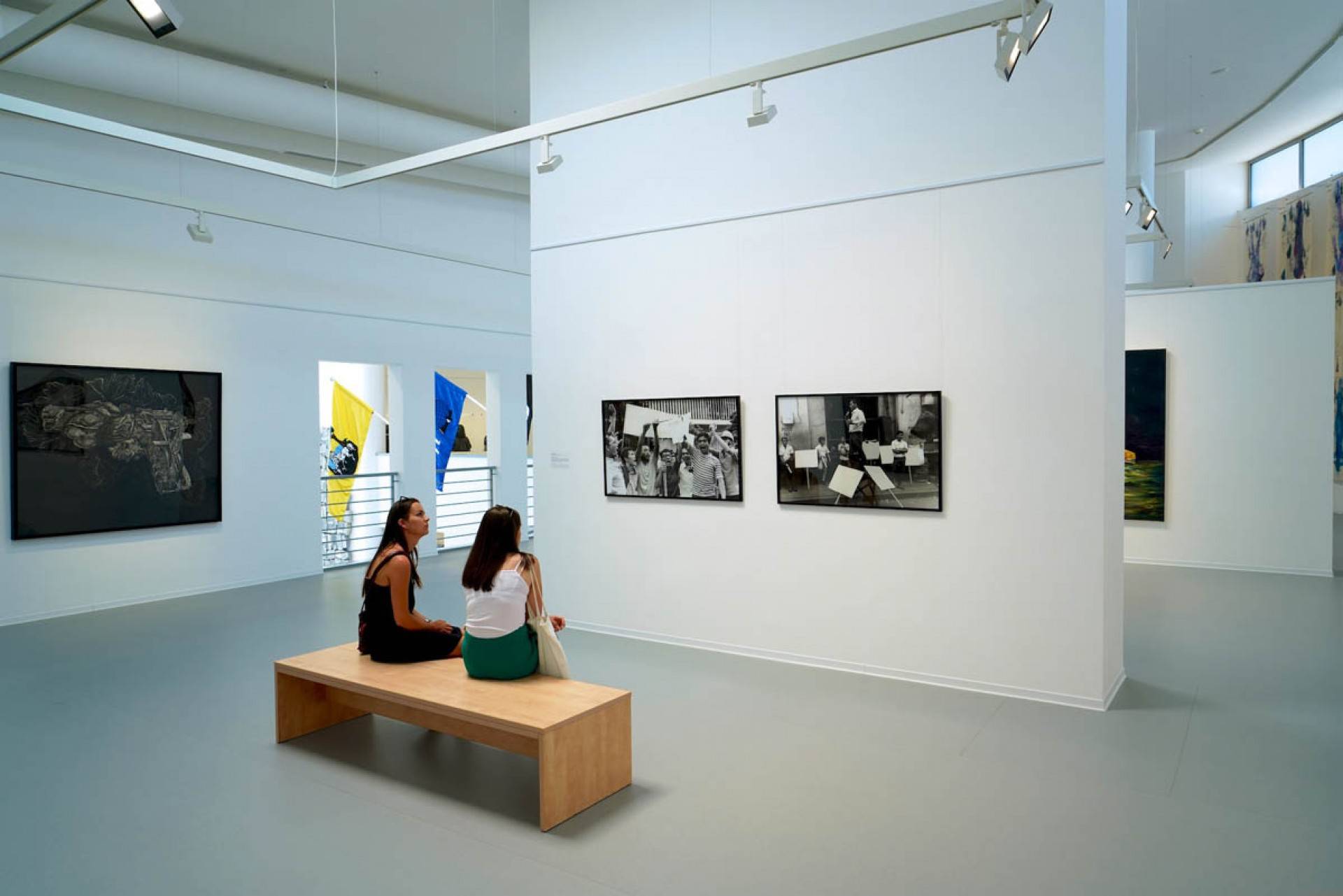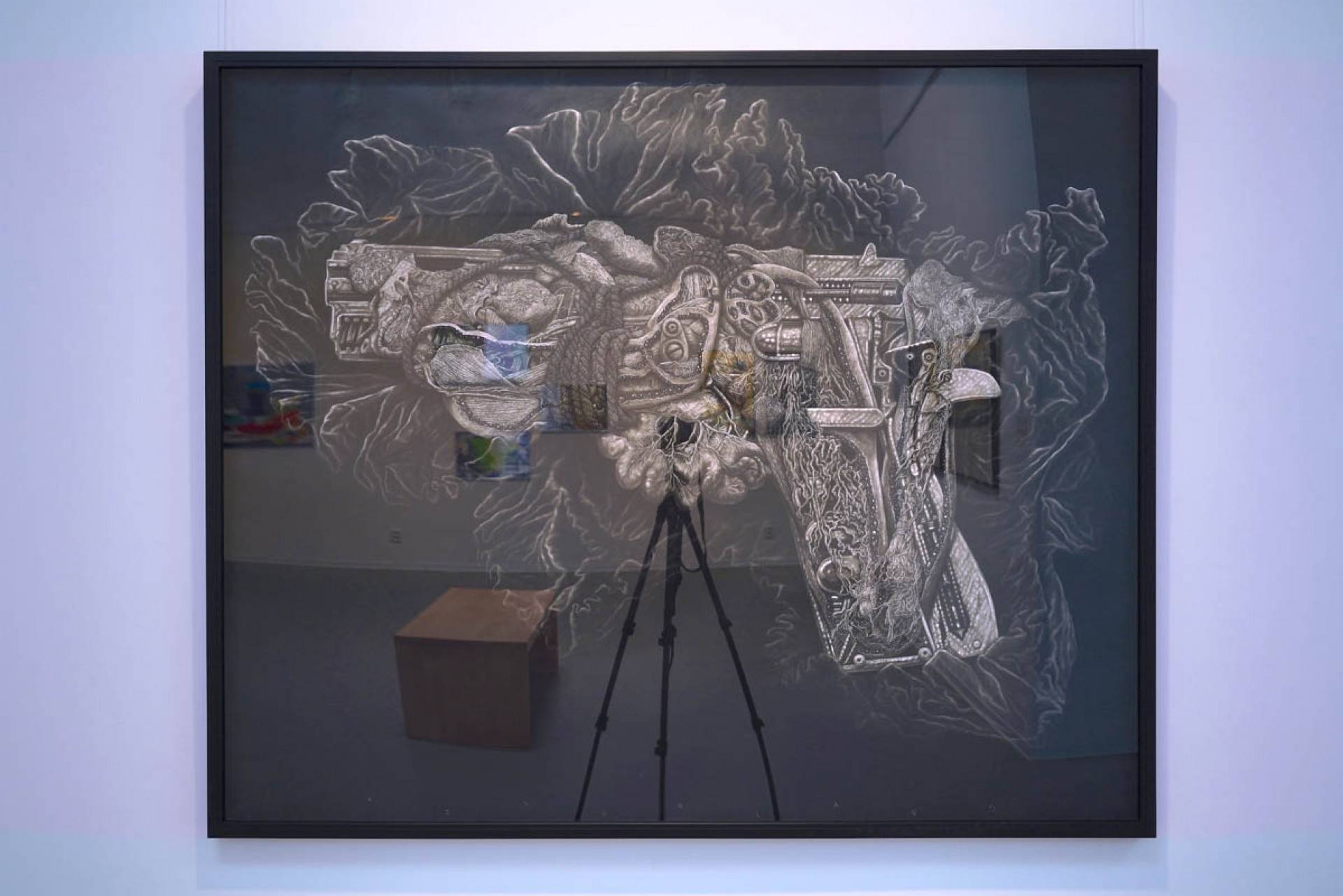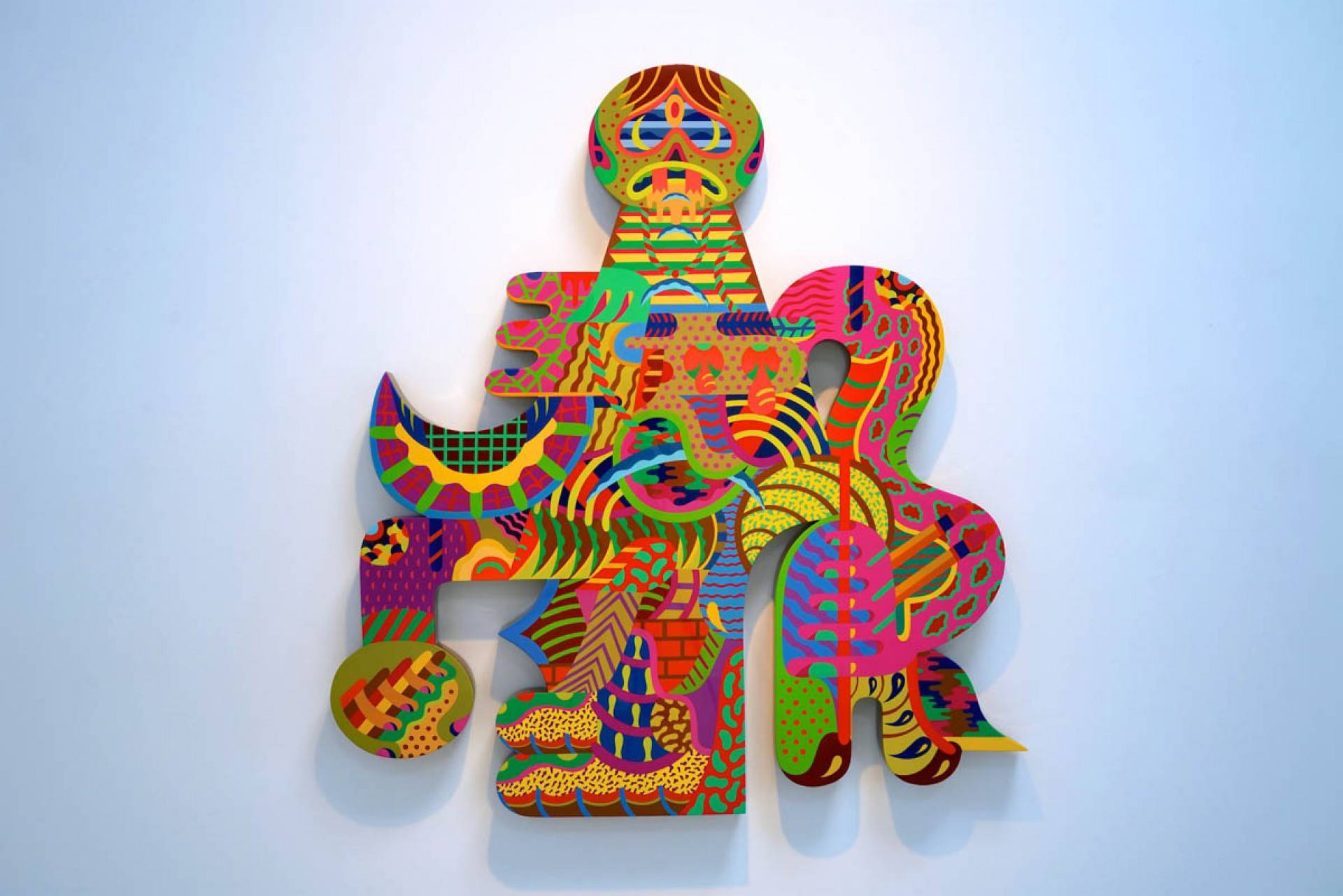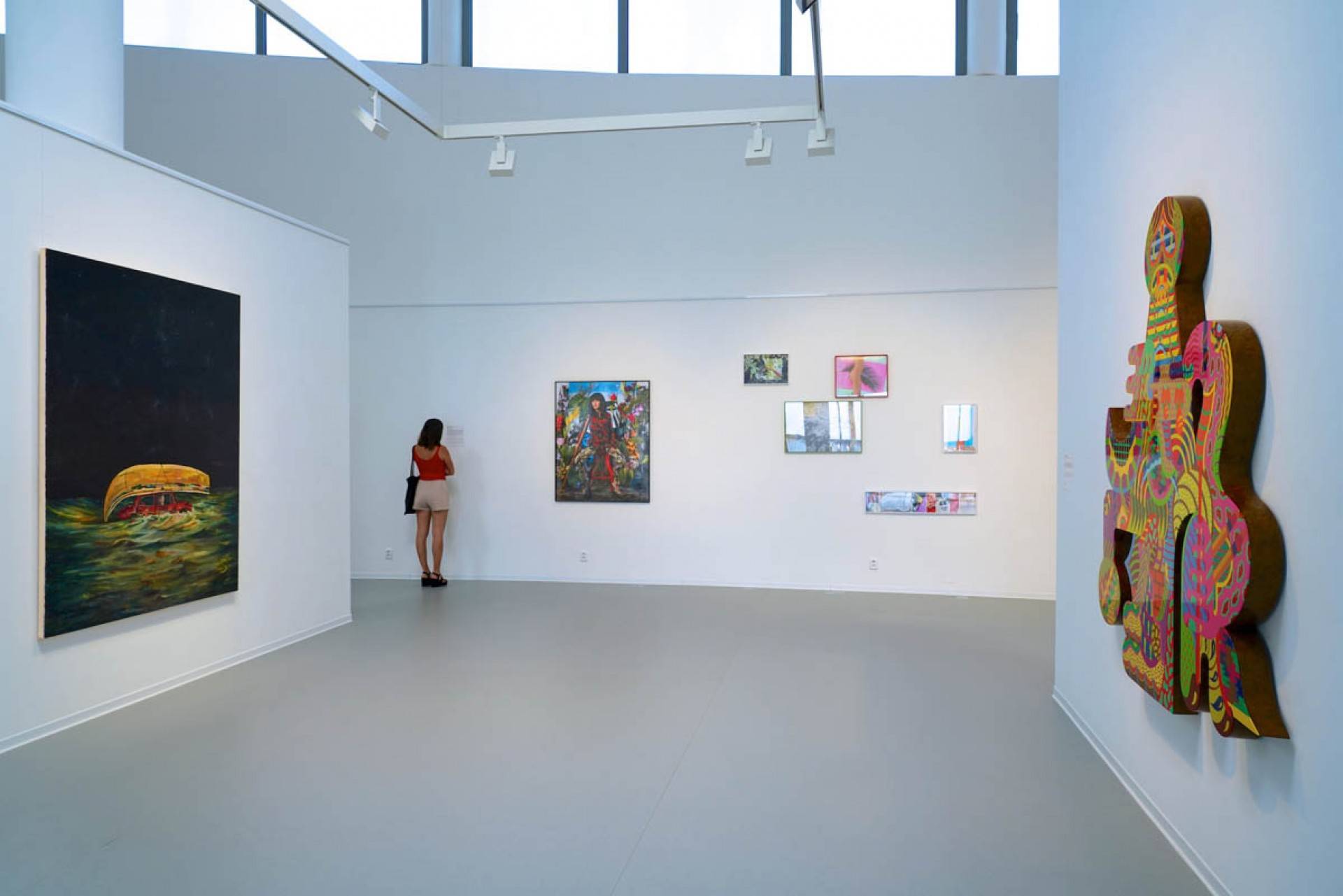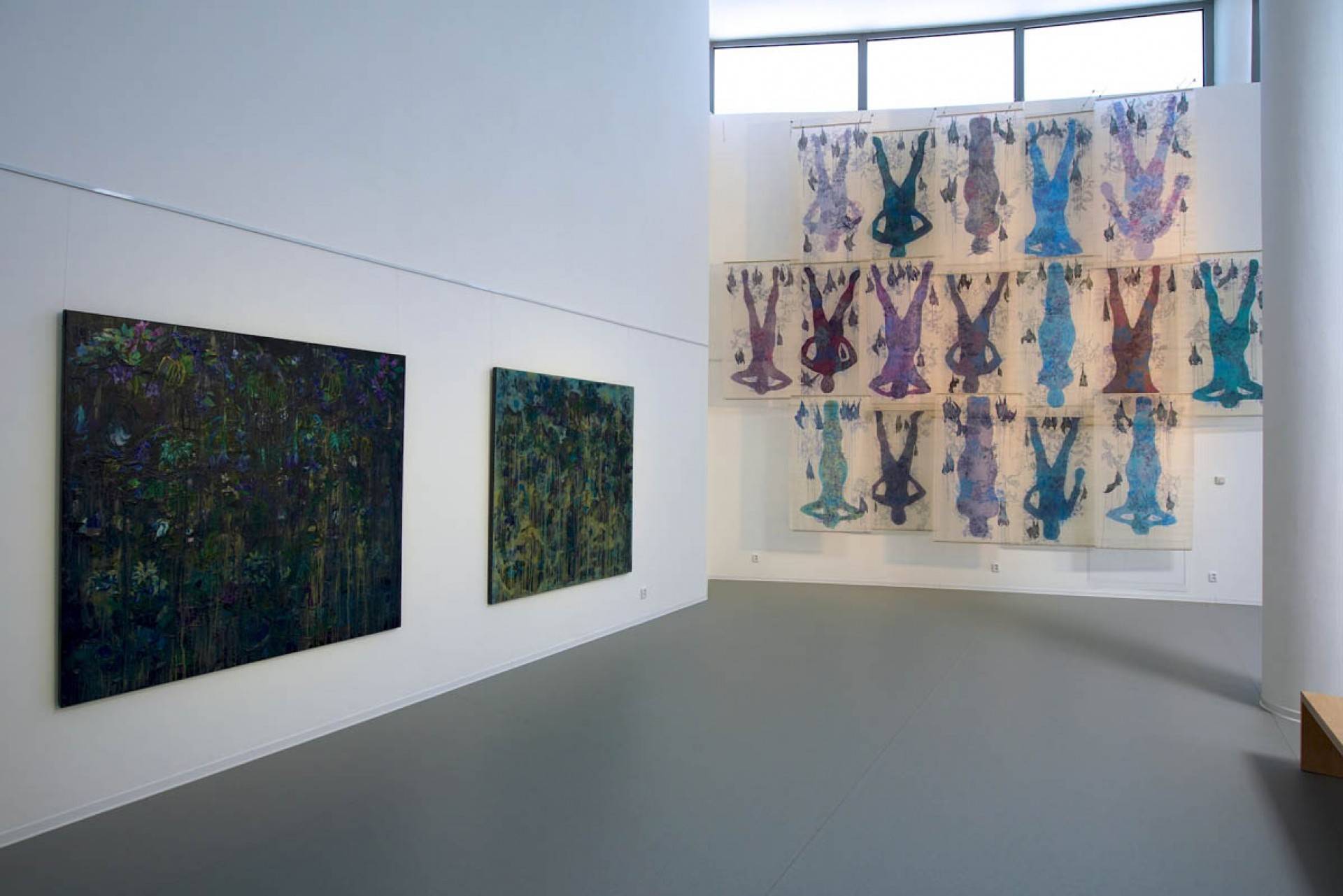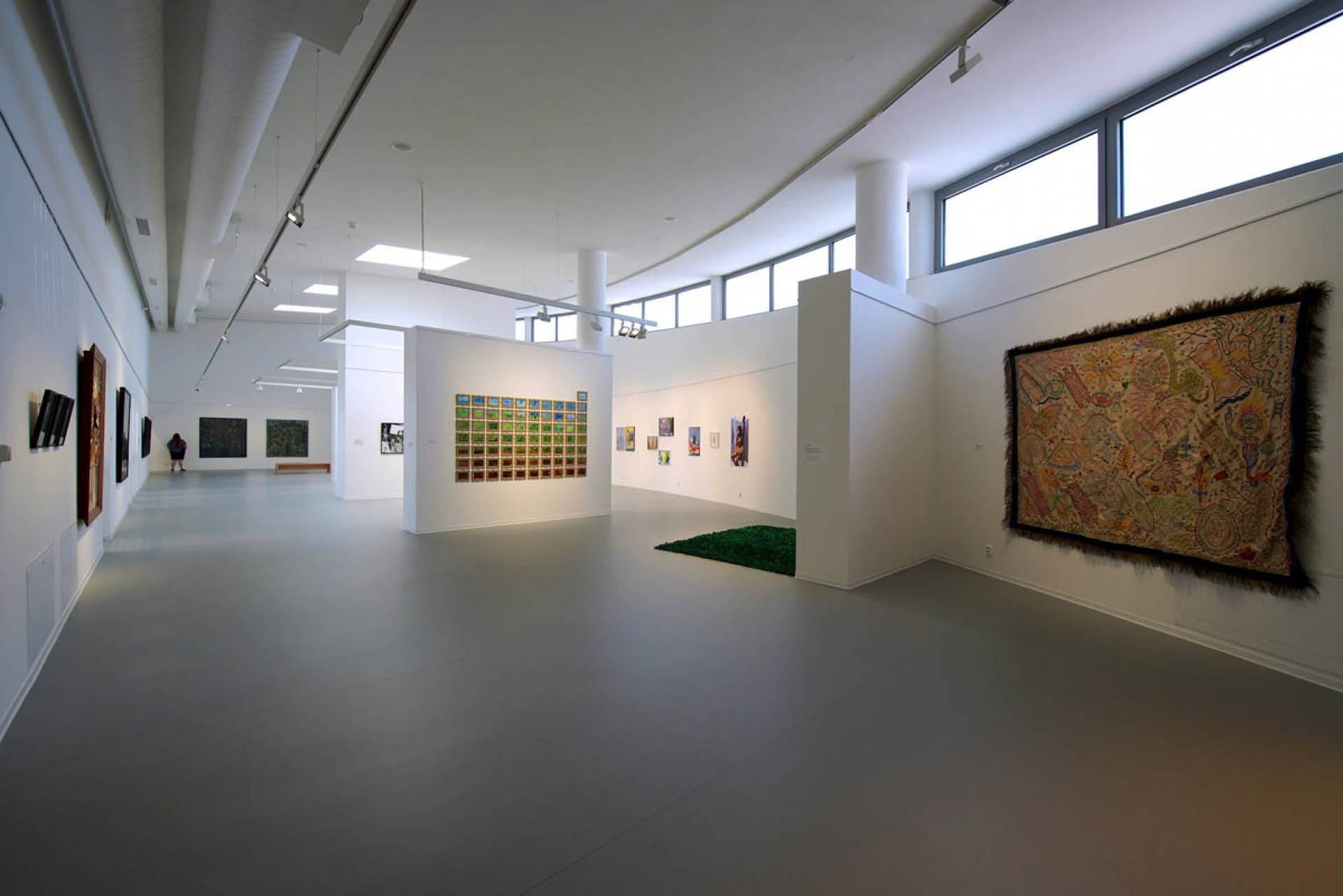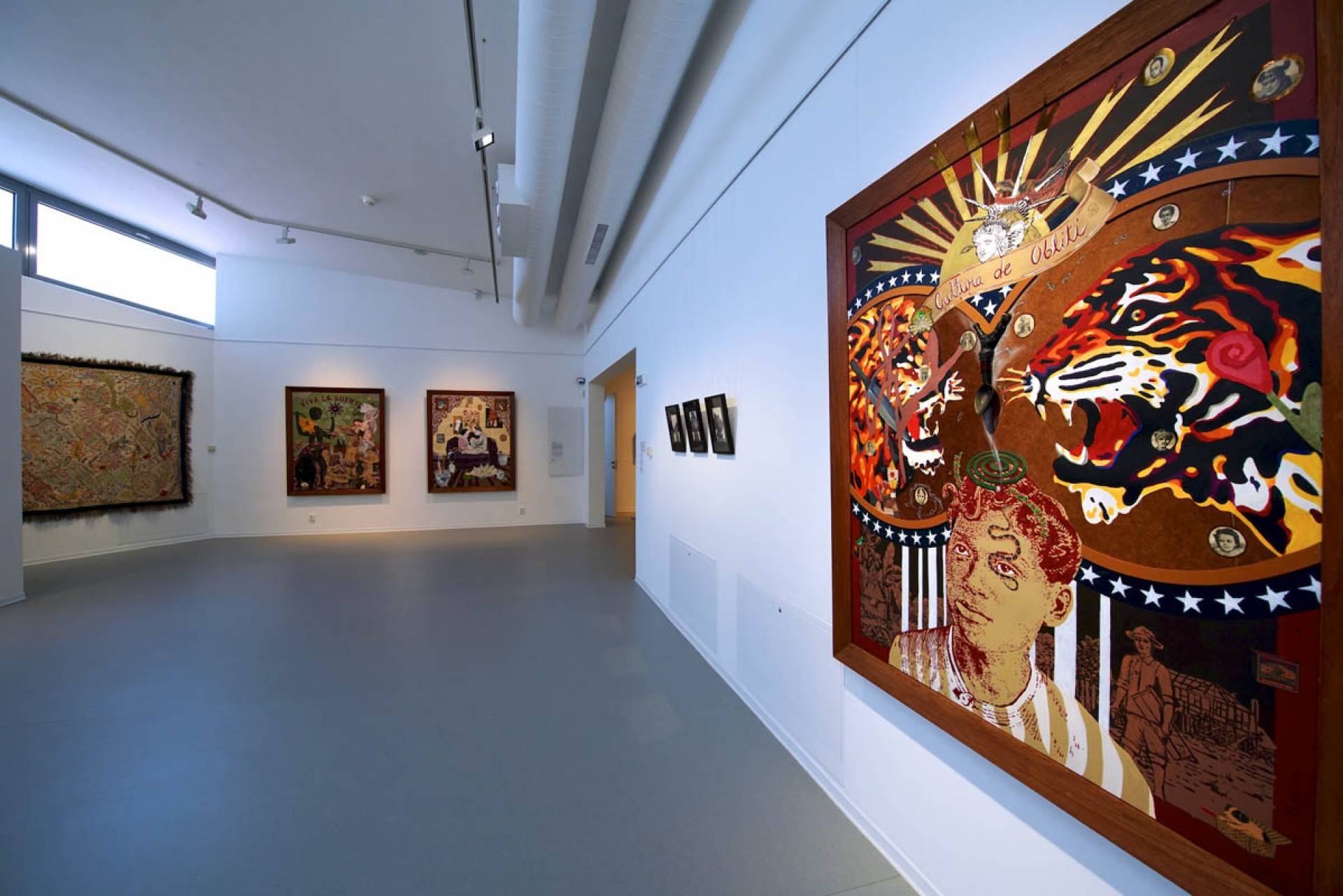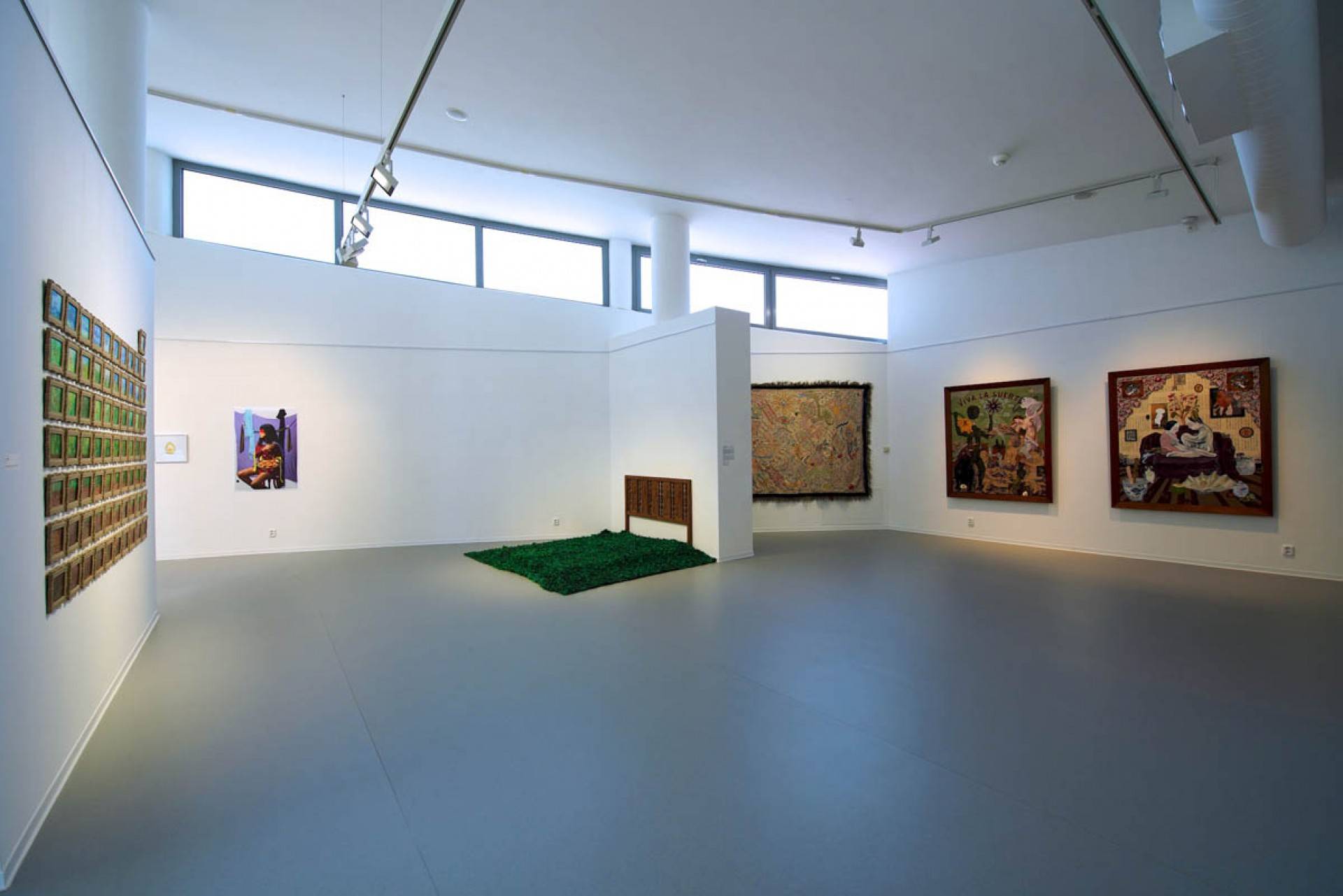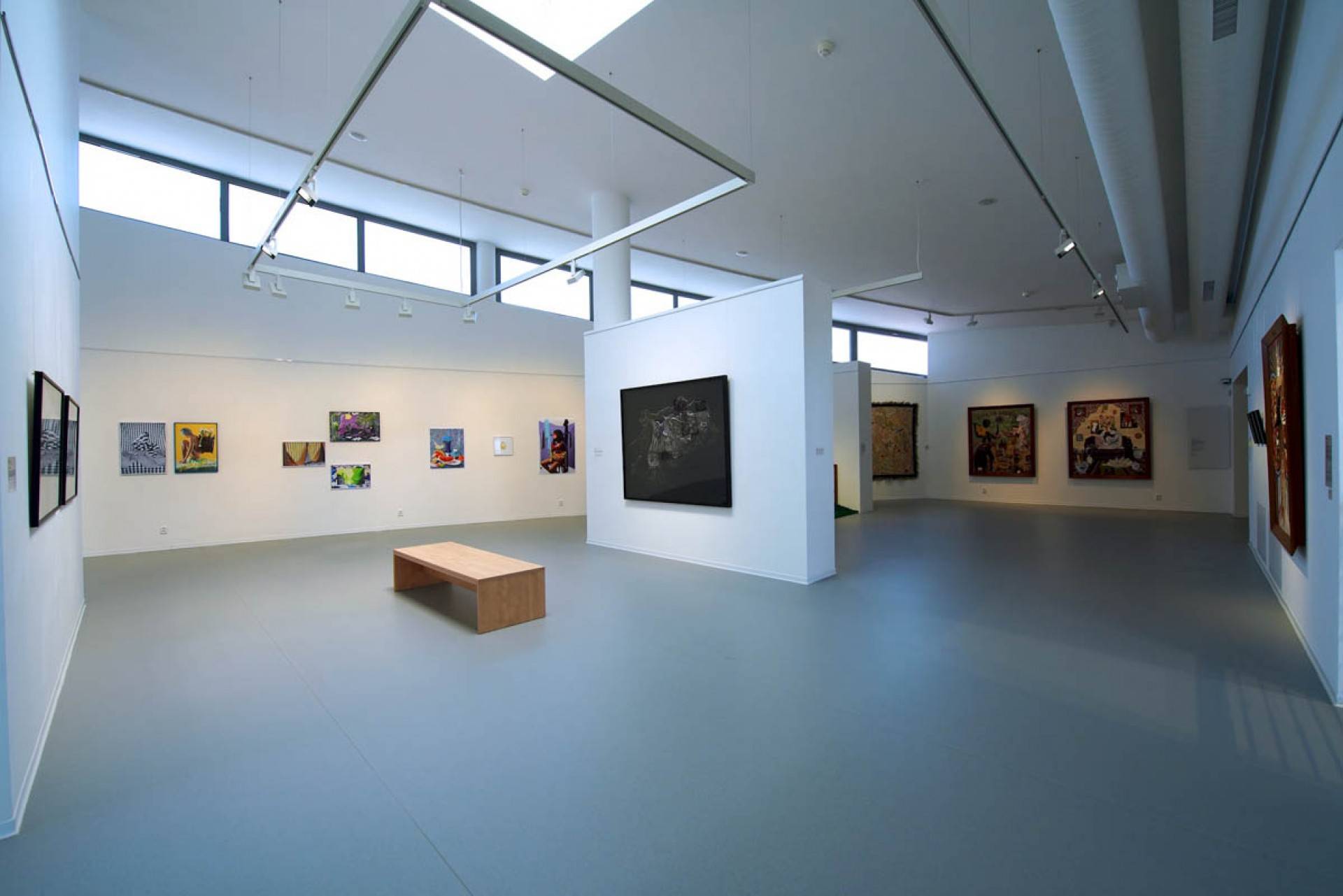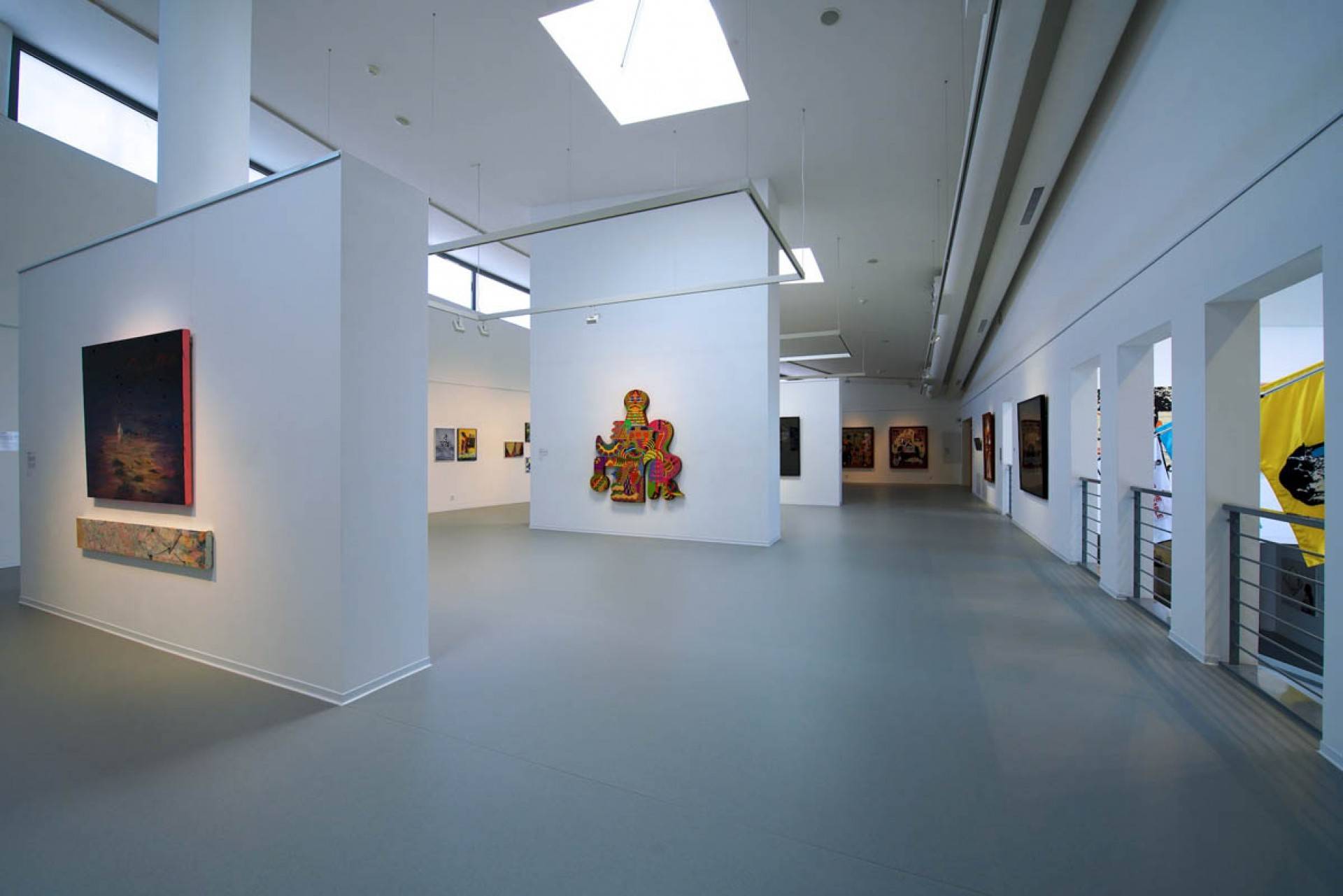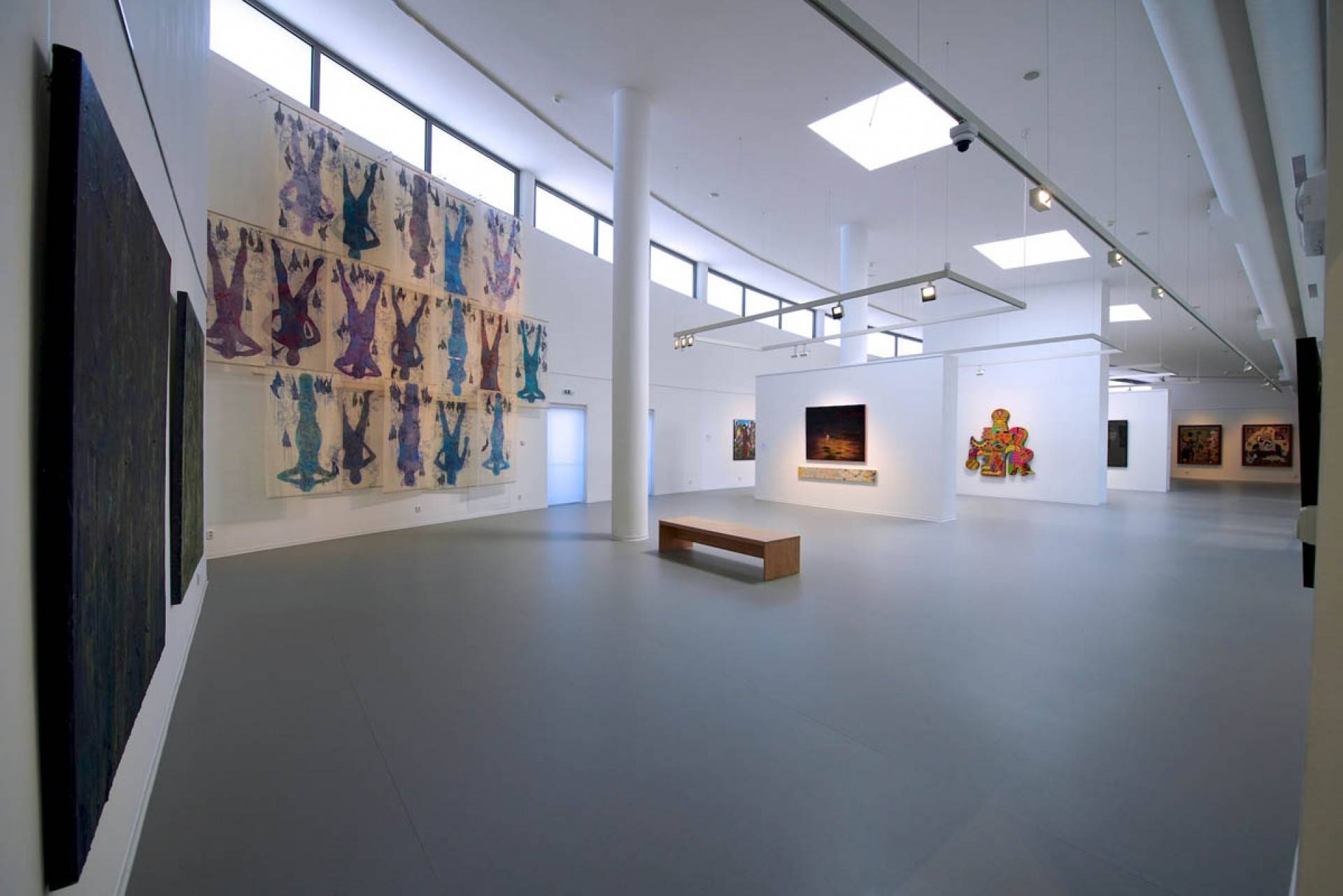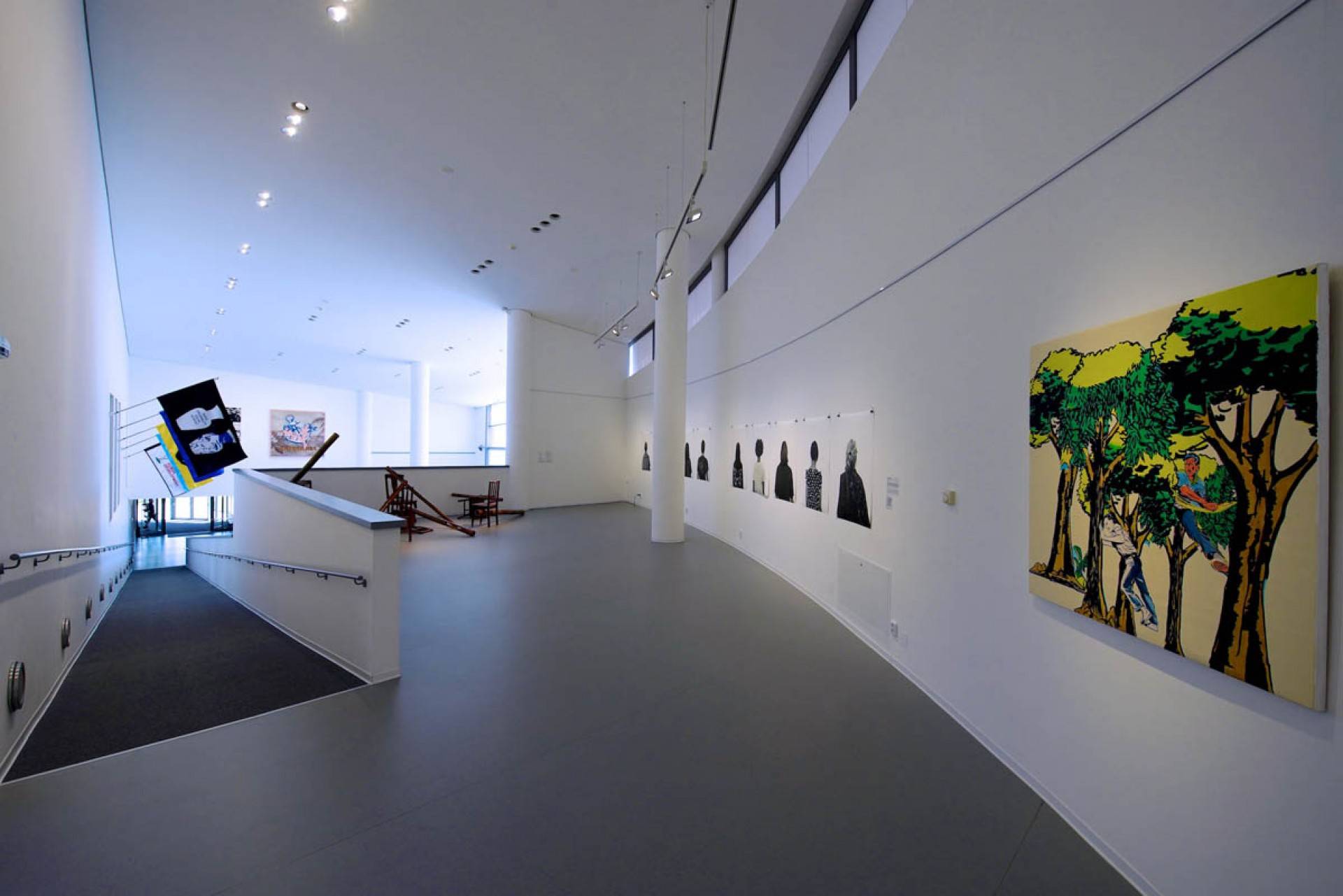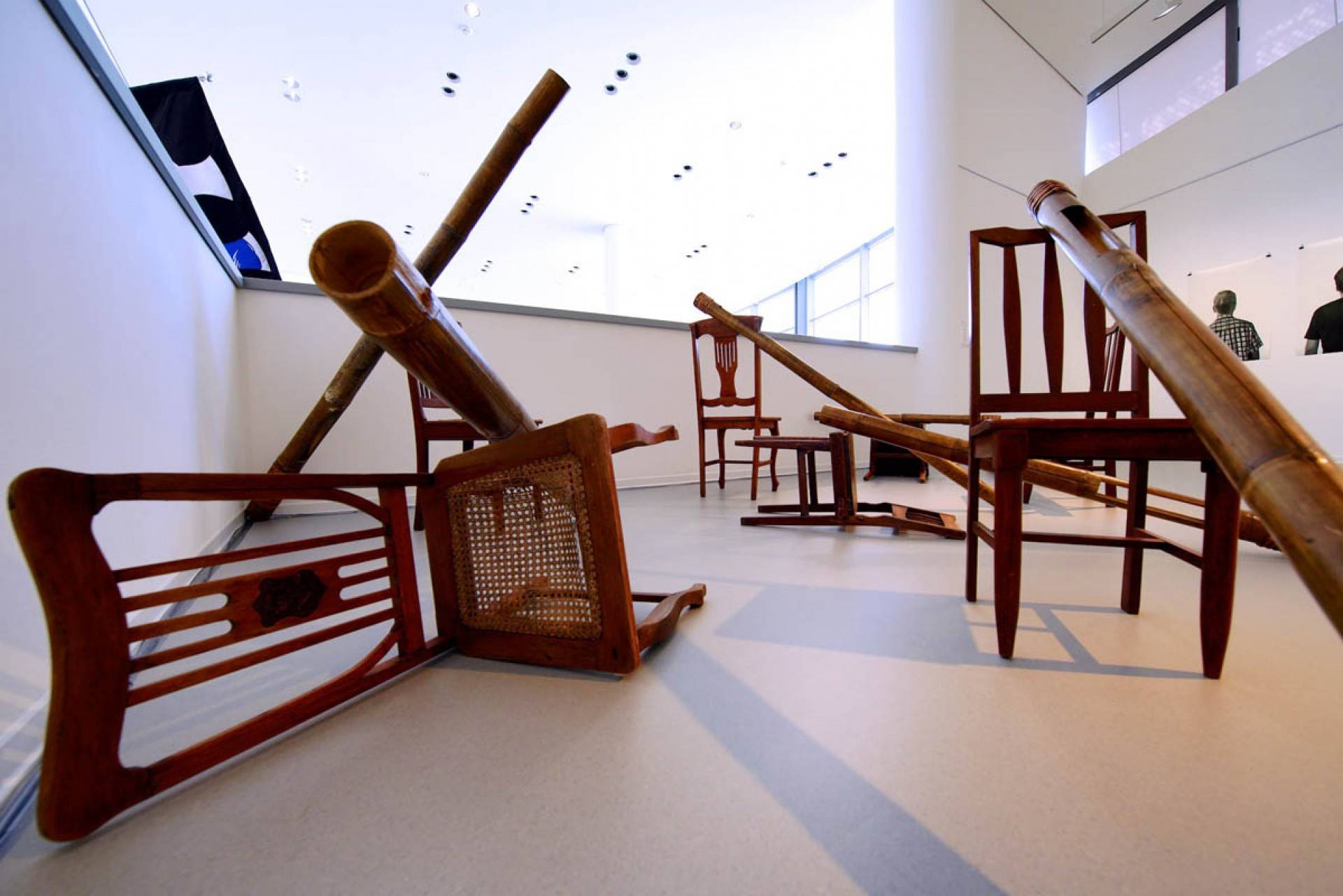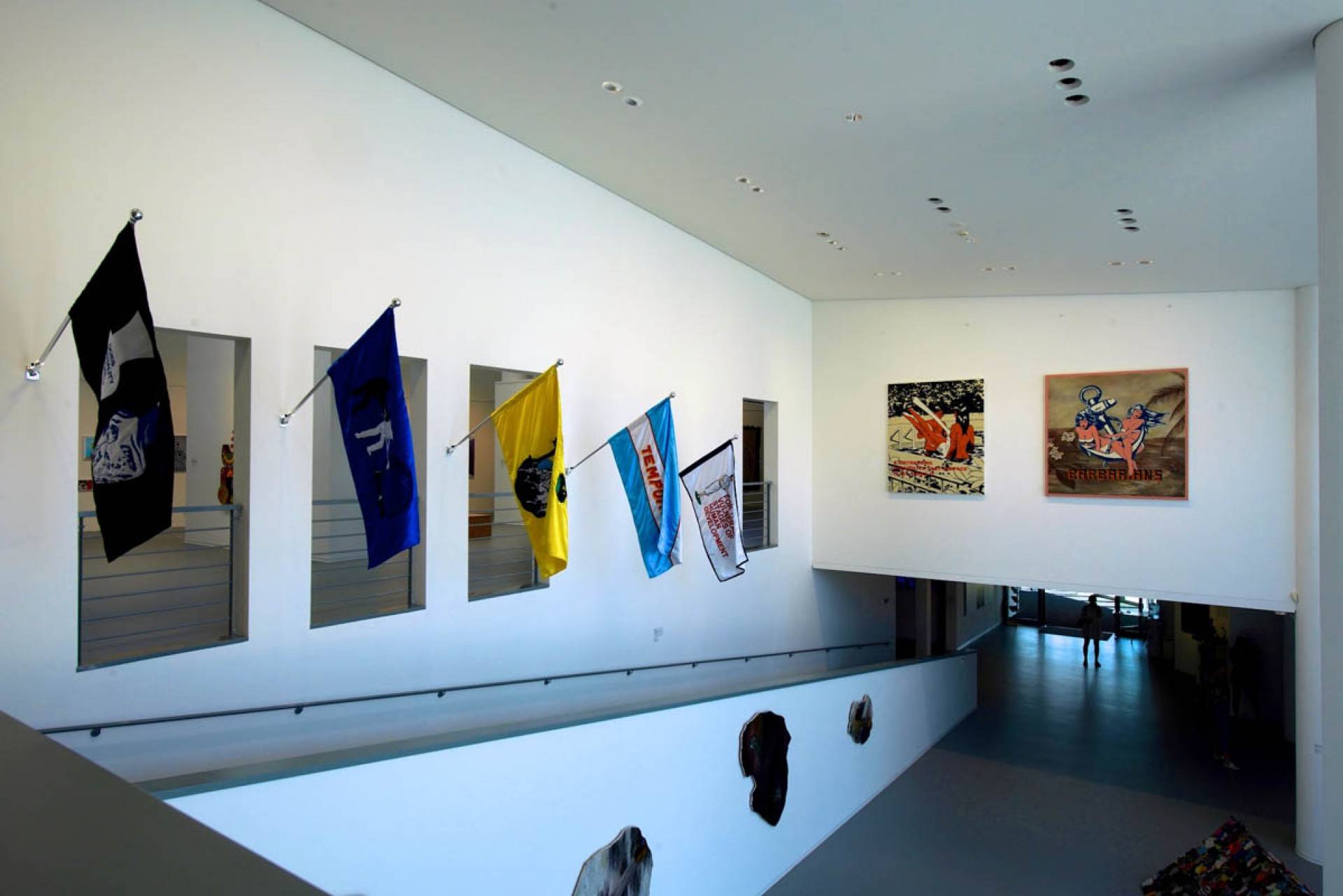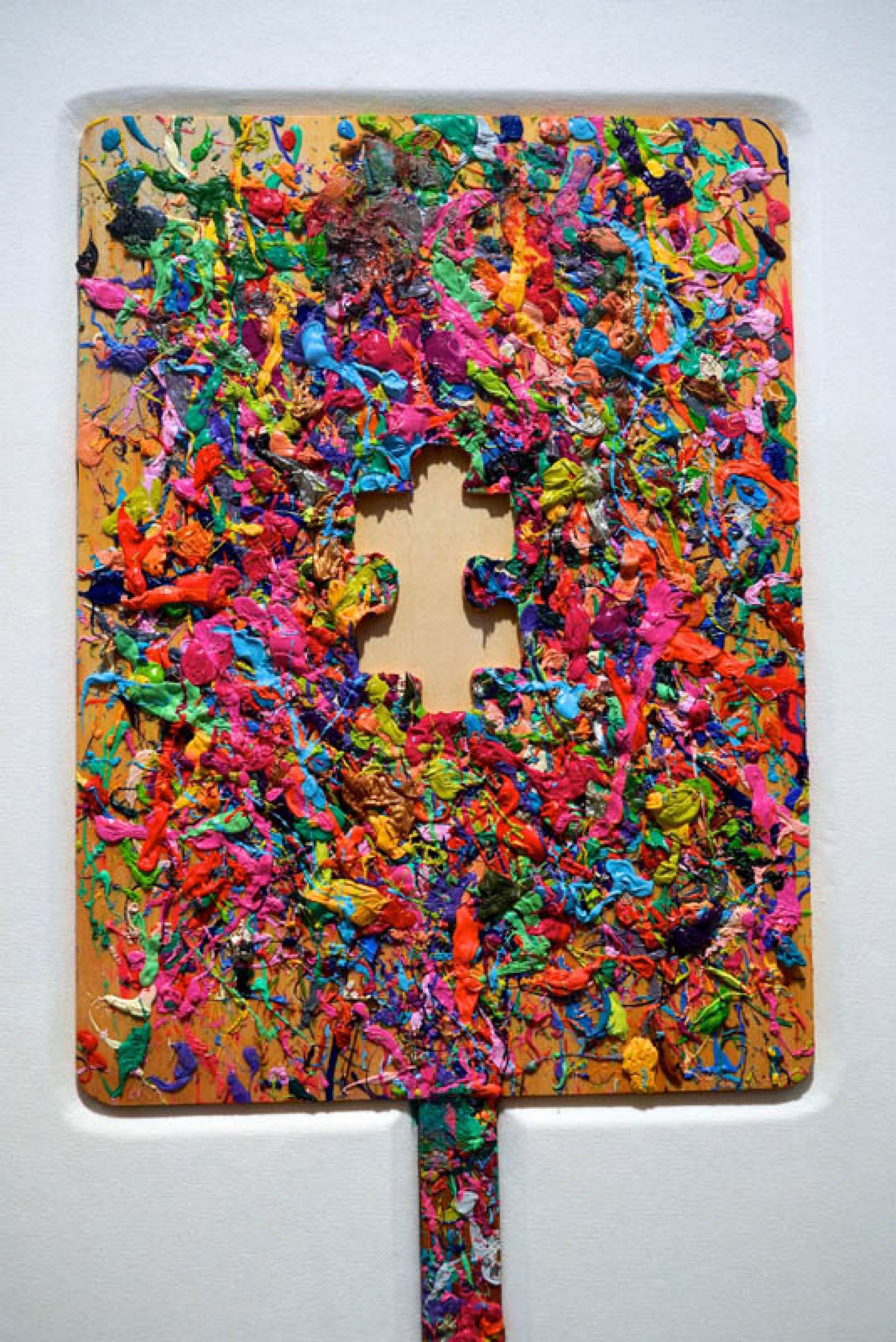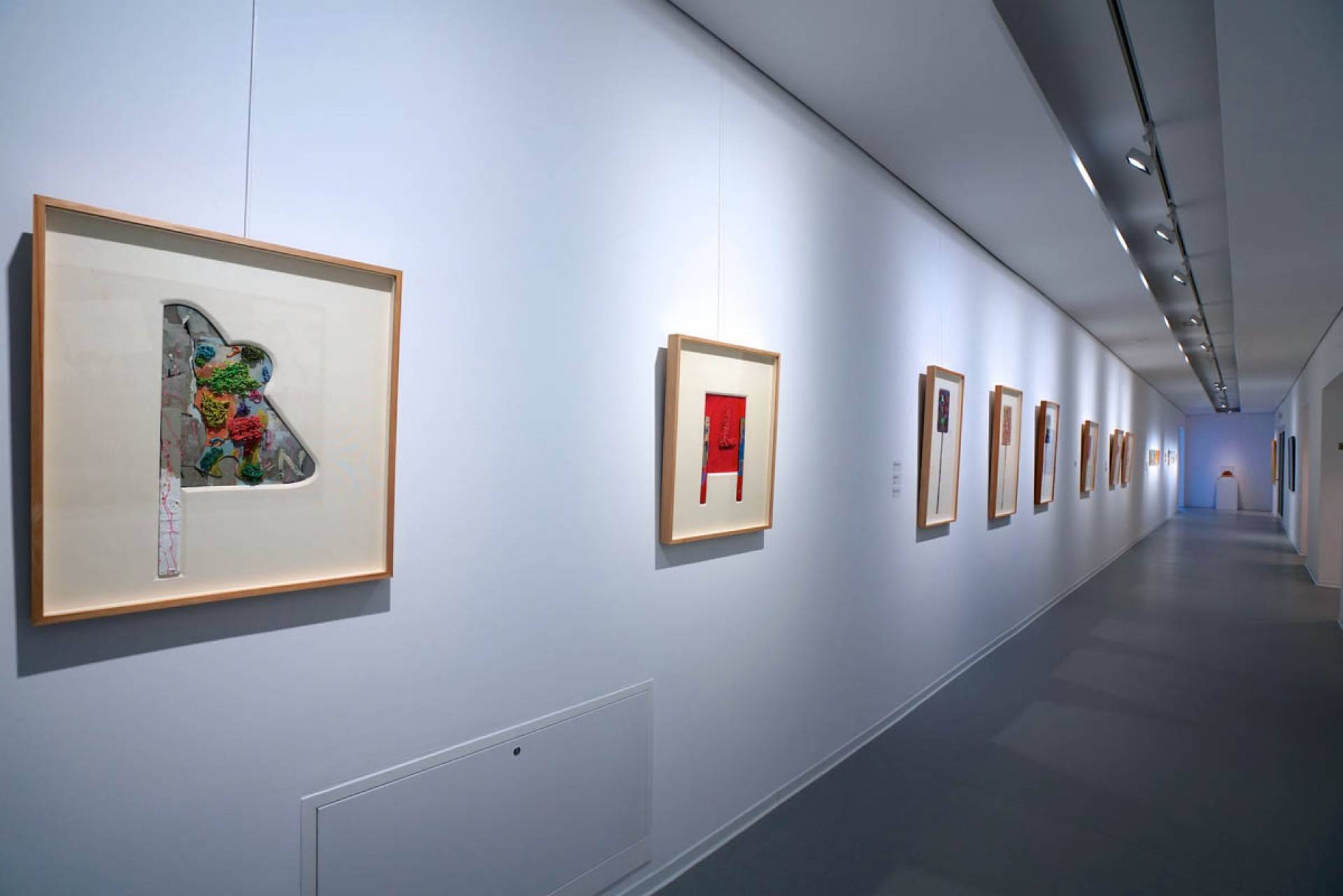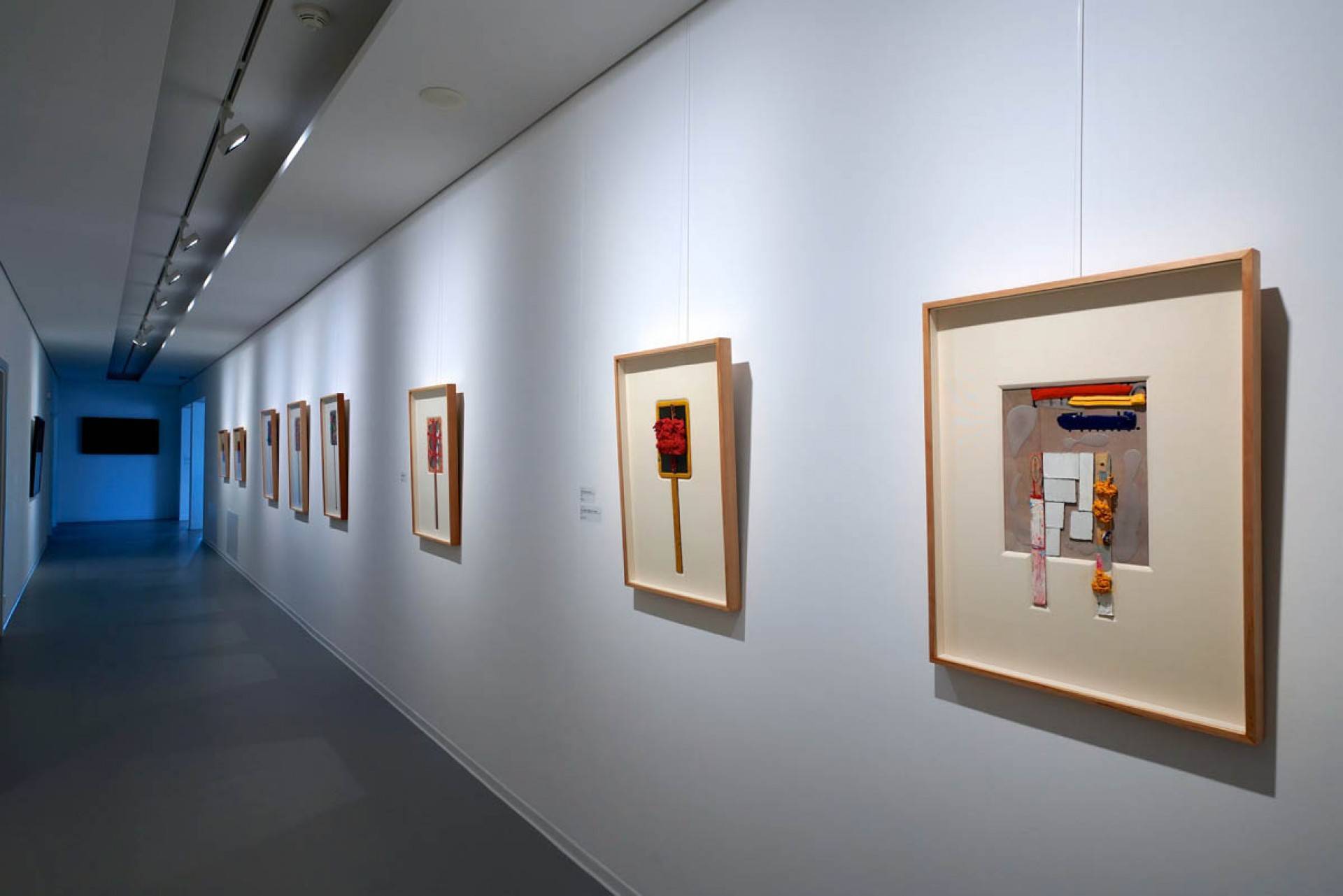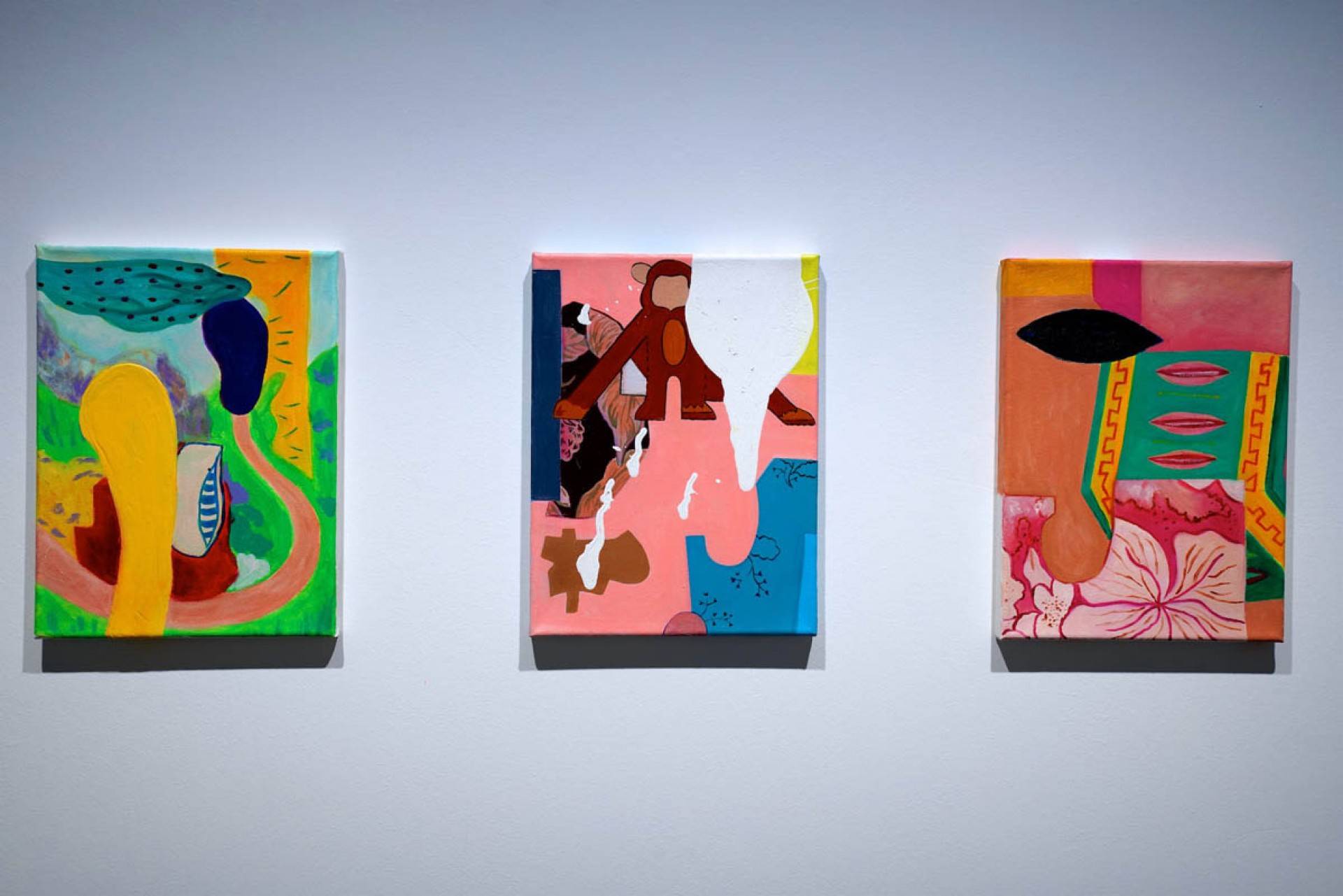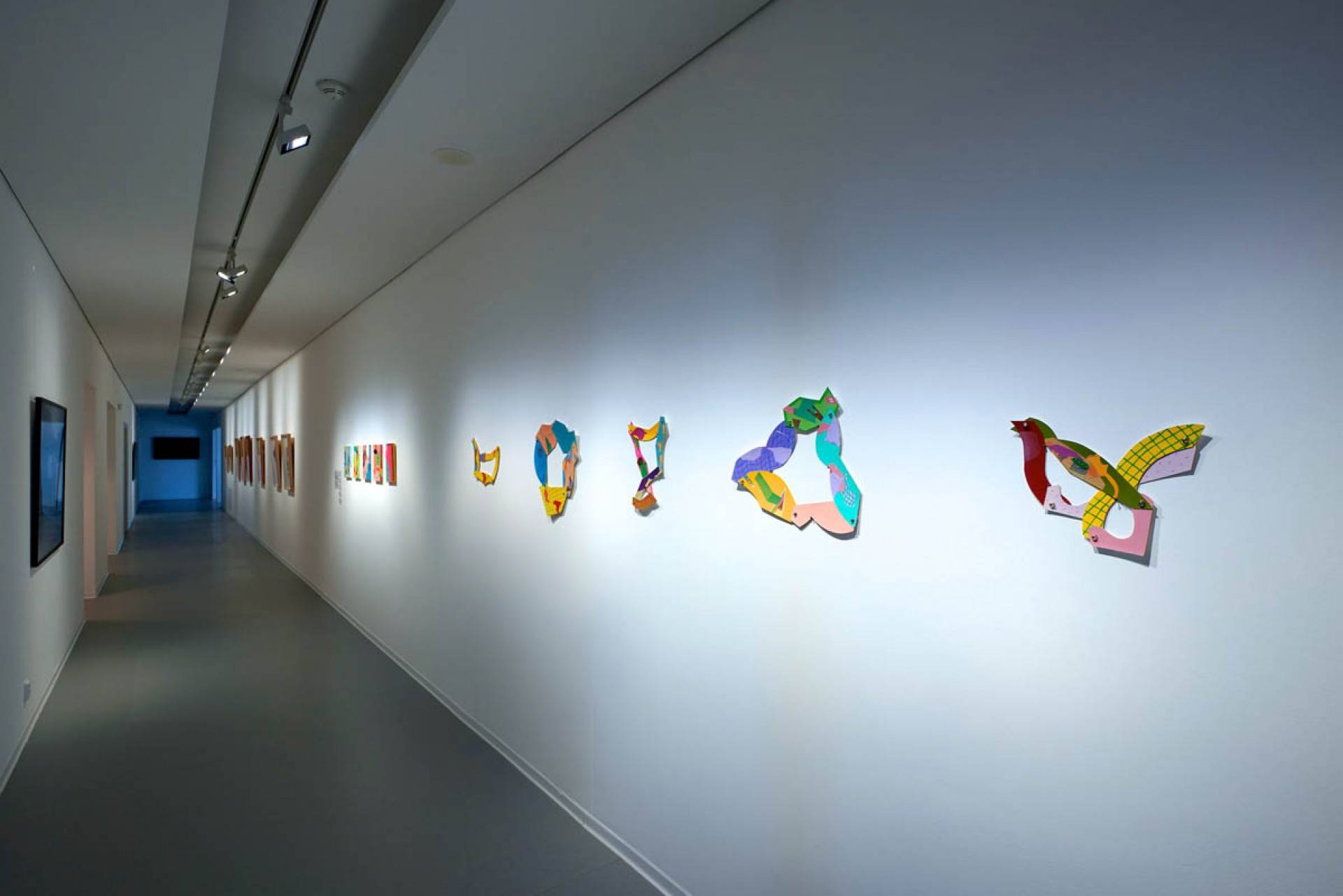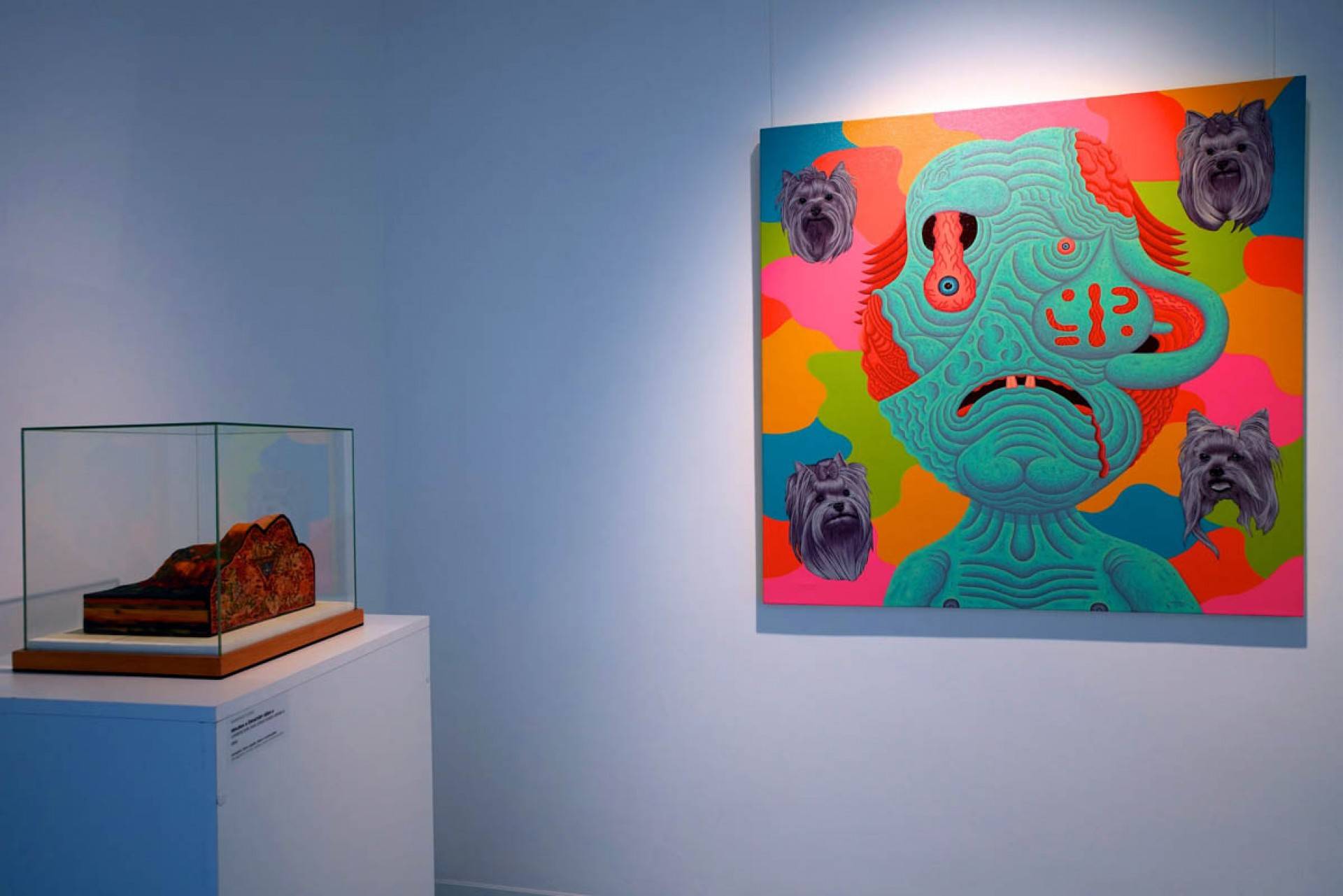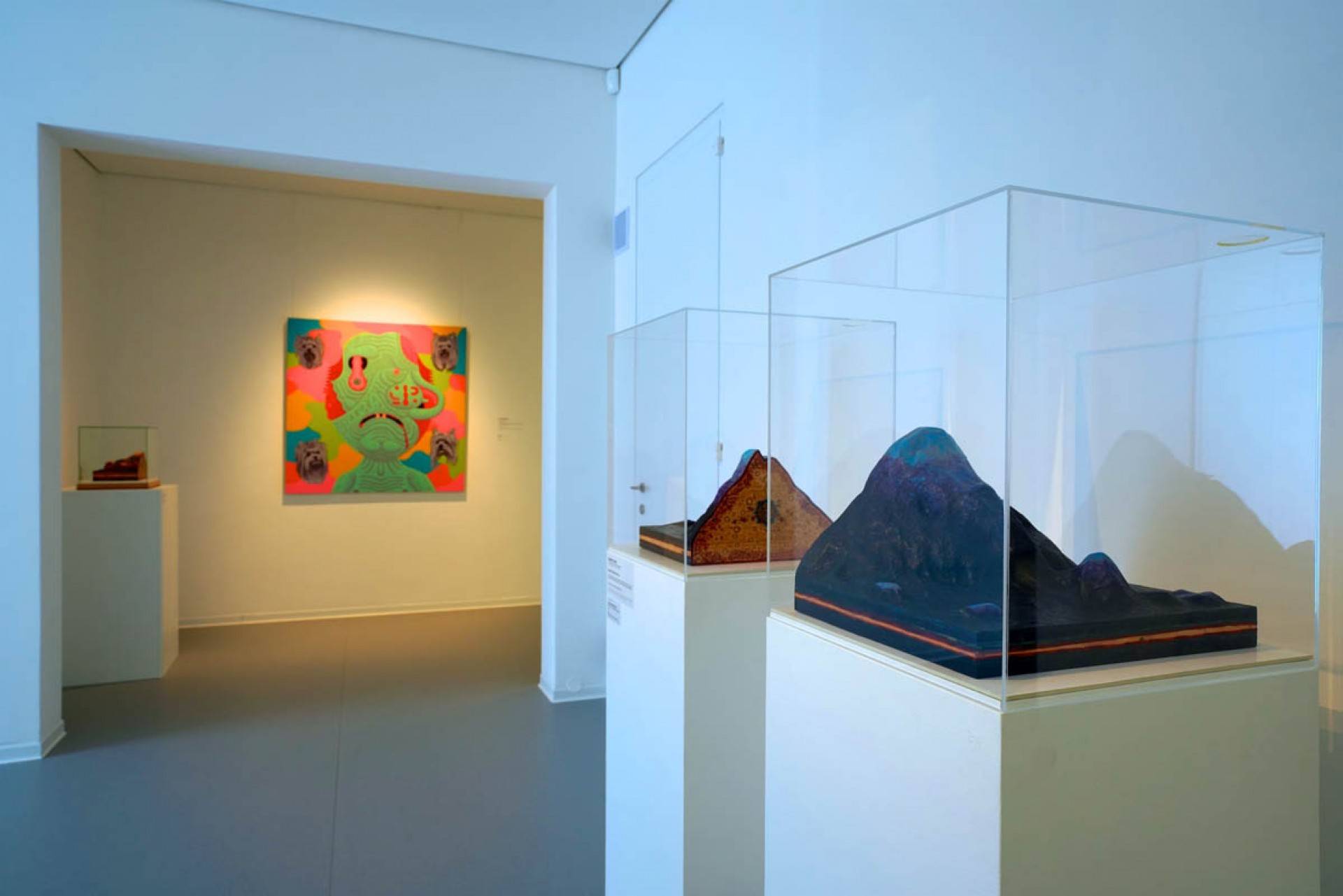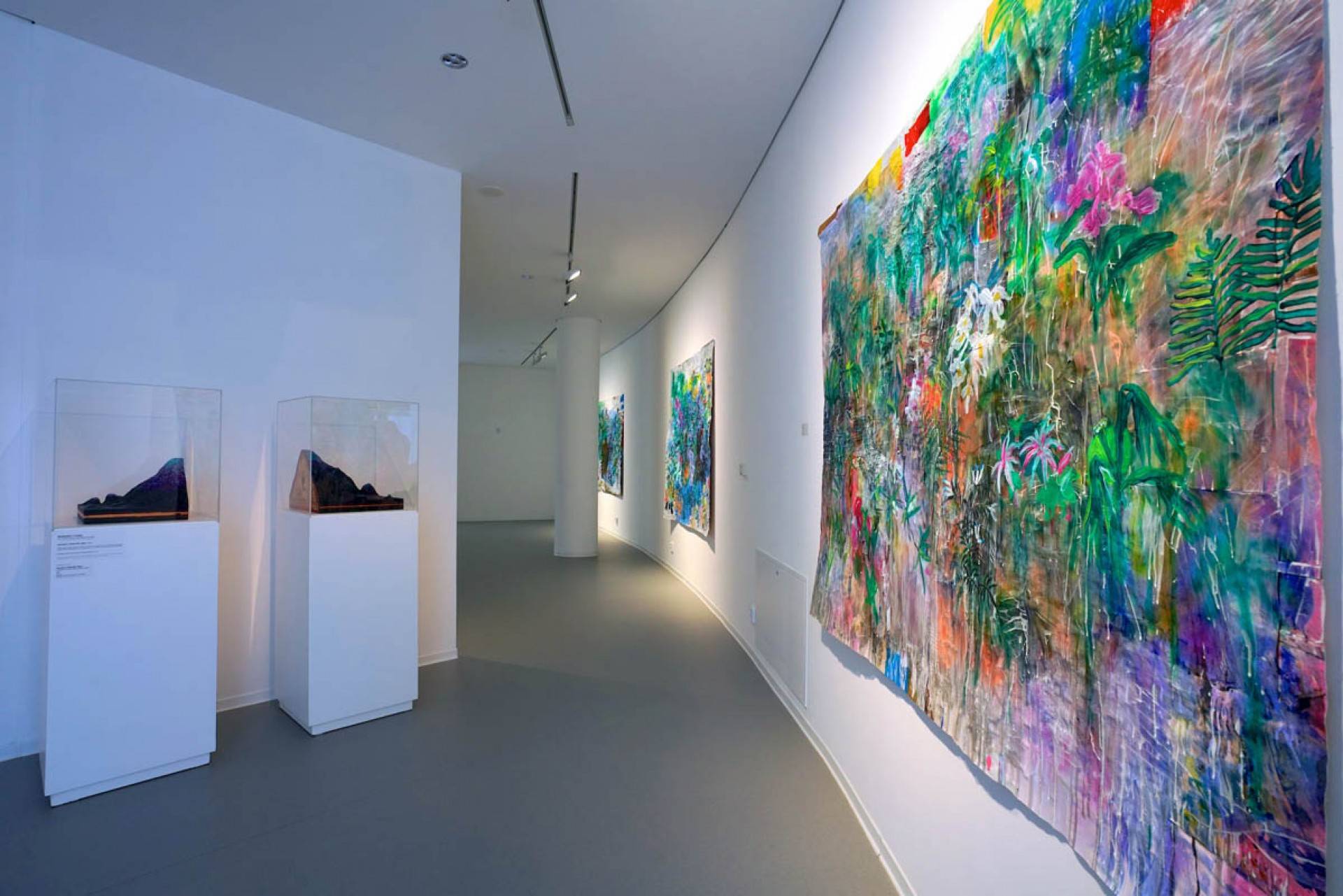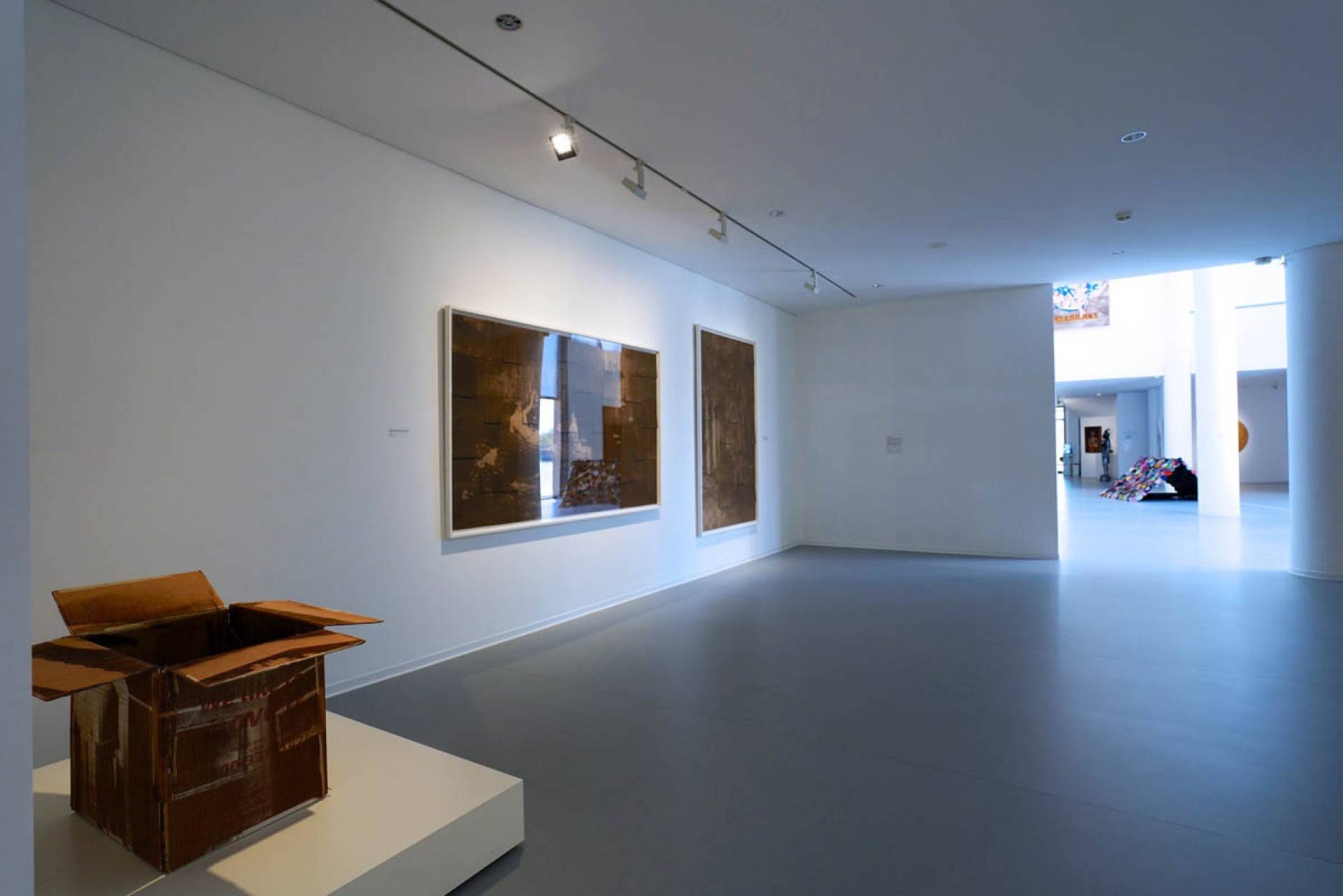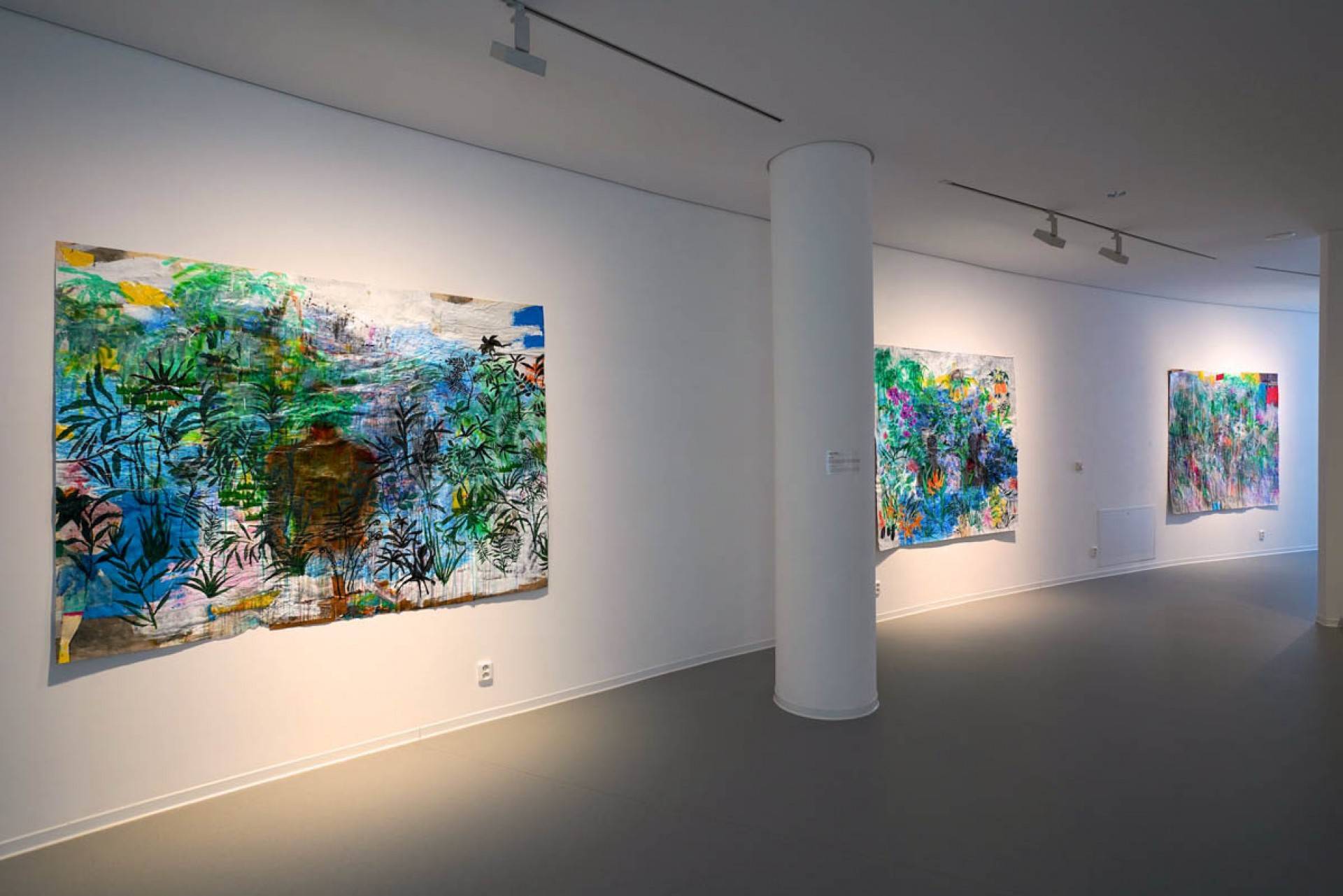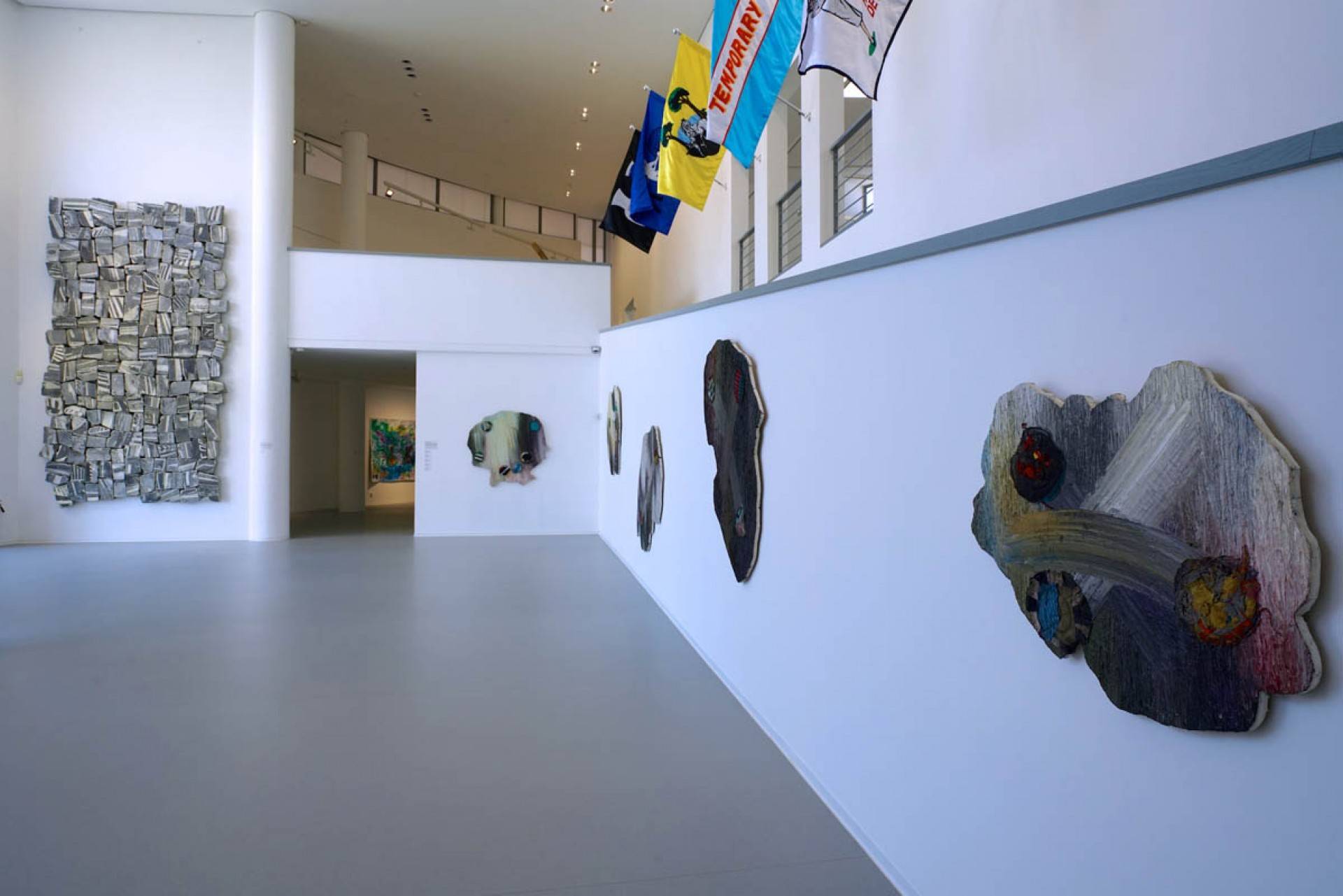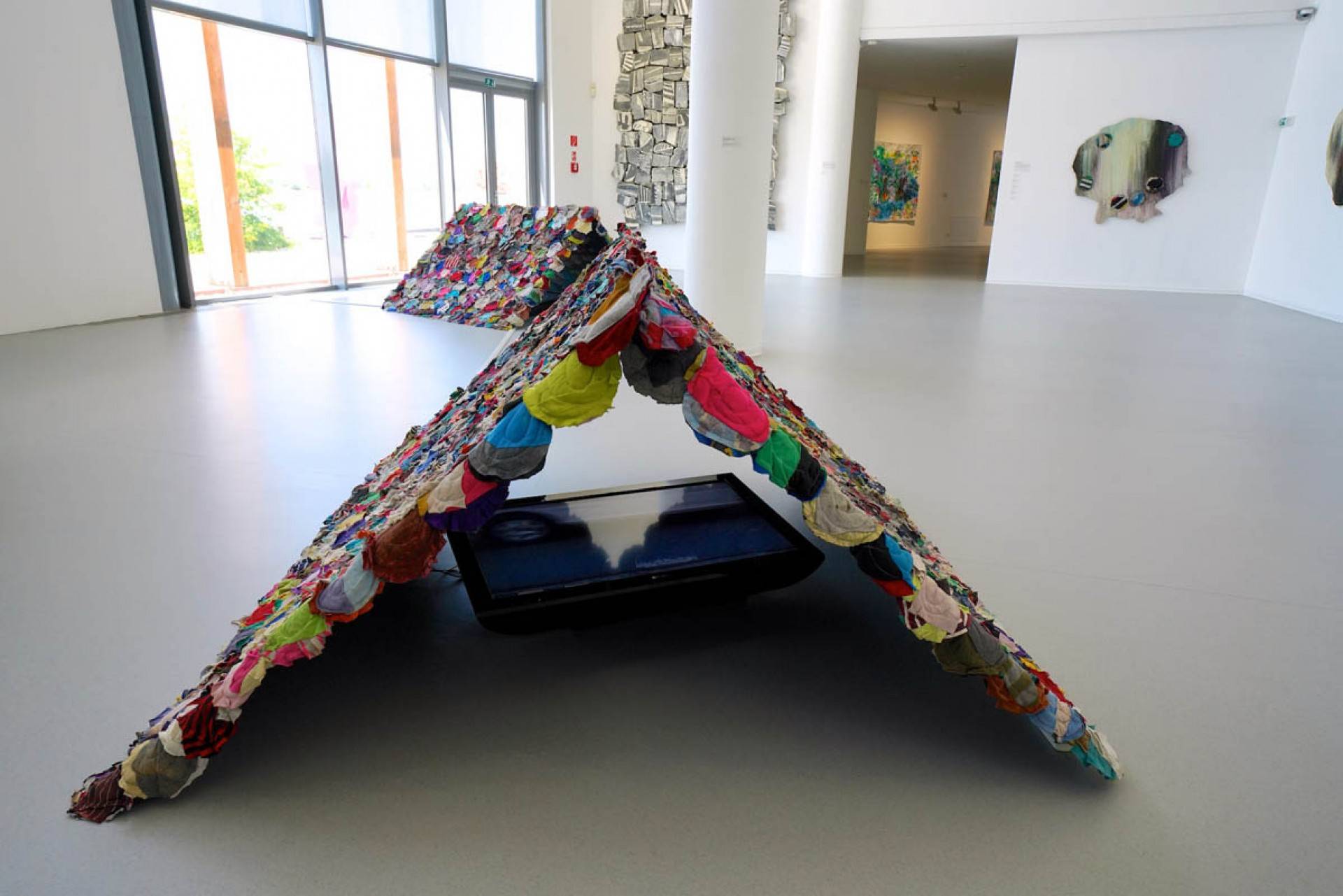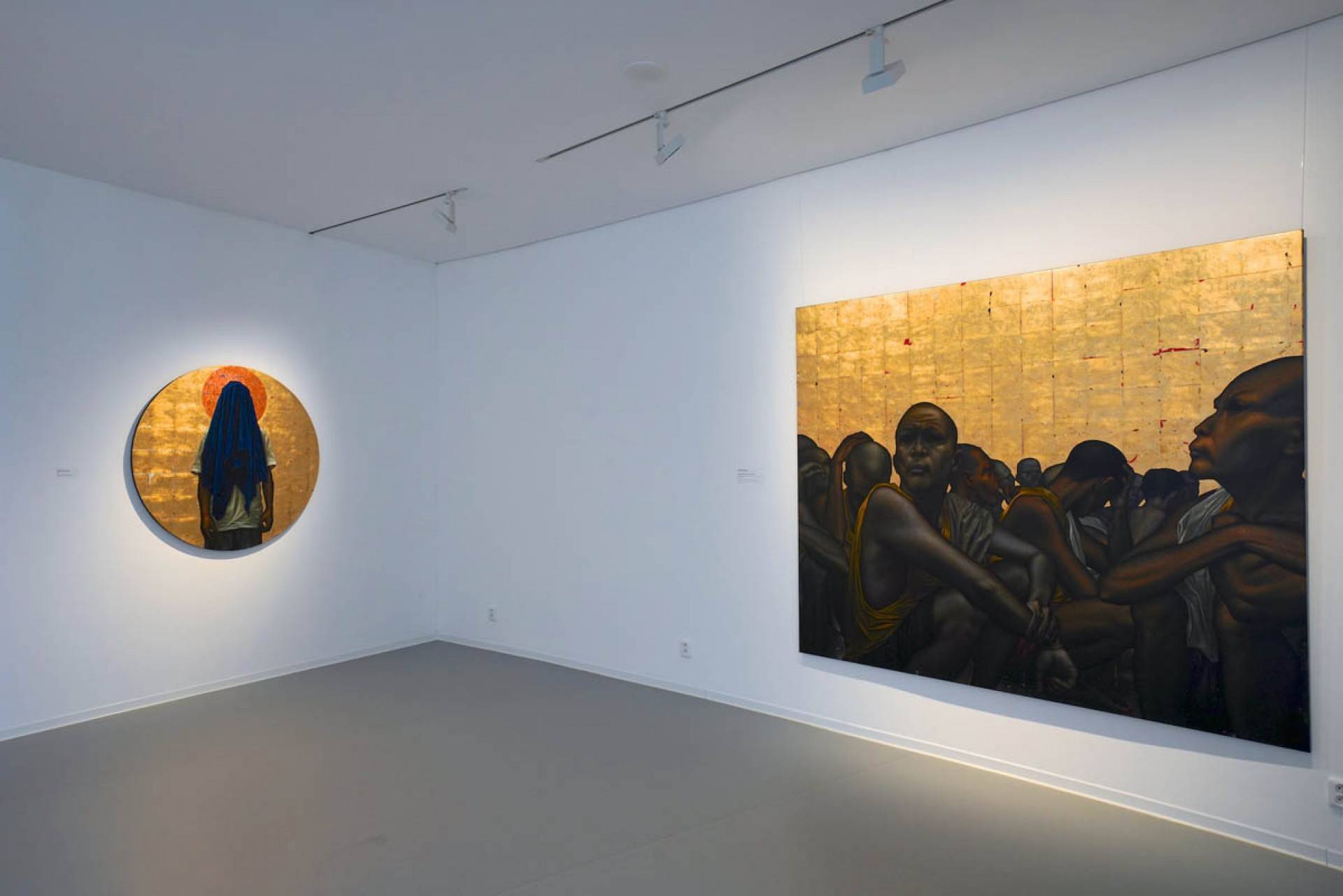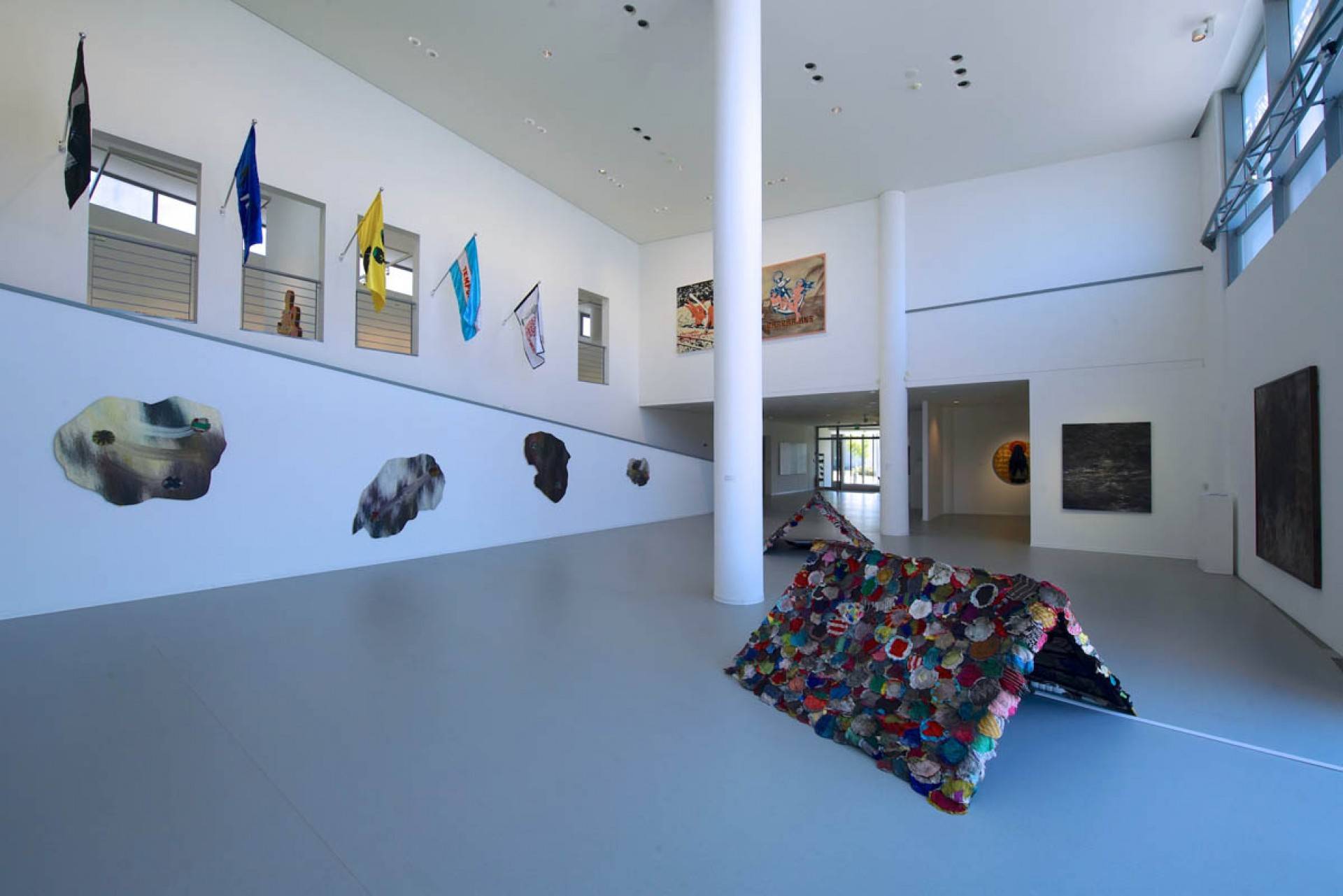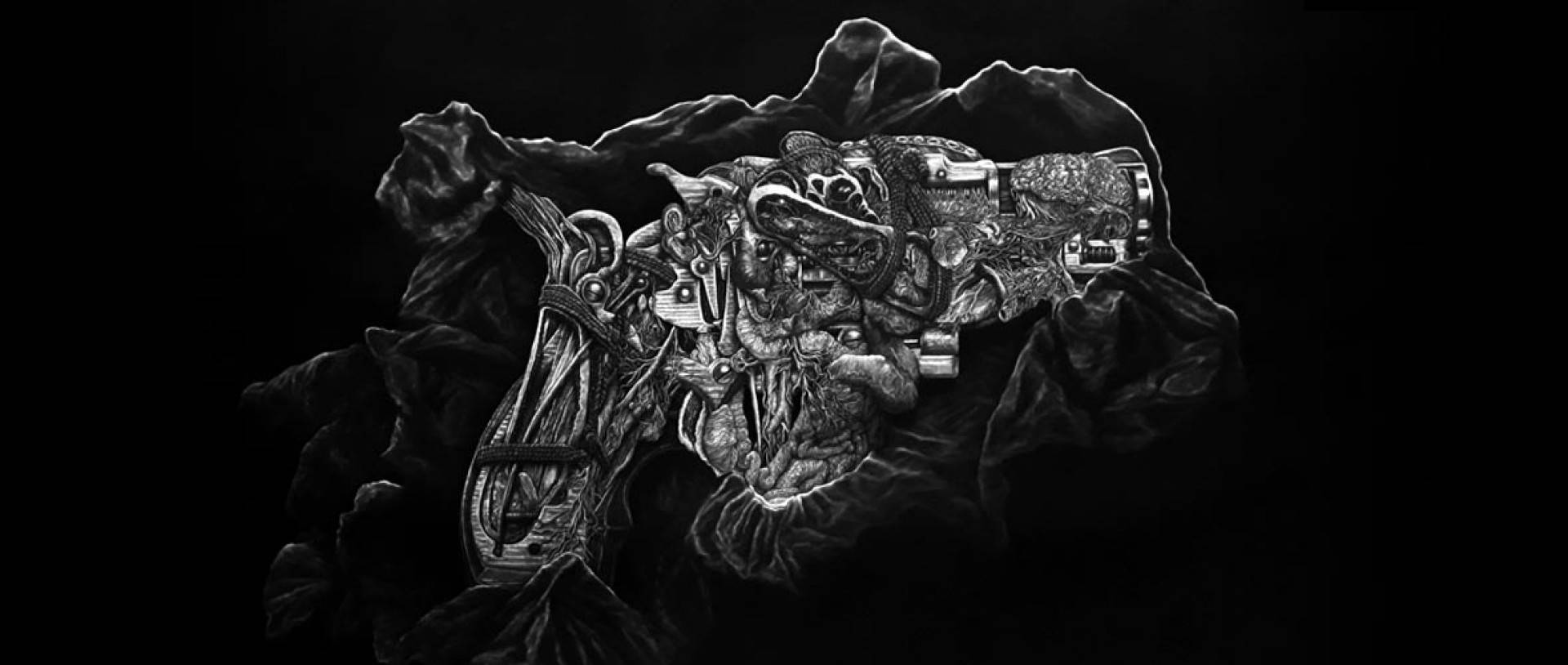

This exhibition brings together 23 of the leading artists from the Philippines. The Philippines is not a tropical paradise though it has beautiful beaches and exceptionally welcoming people. A country invaded in turn by Moros, Portuguese, Spanish, British, Americans and Japanese it only became independent in 1946. It suffers from overpopulation, corruption and poverty. These are not, of course, problems unique to the Philippines.
Some of these artists respond to these issues or more particular political problems: the current “war on drugs”, attacks on press freedom, the overcrowding of the capital city Manila
In everyday life Filipinos respond to things by being versatile, optimistic and improvising. Many go abroad to make a living, religiously sending back money their family. The artists are versatile too. Though most of these artists make paintings, they also make installations or sculptures or collages. Two of them focus exclusively on drawing. Three on photography or video, one on maps and fabric works, one is a dancer.
Well-schooled and informed, ambitious and inventive, as they are, how do the artists of the Philippines represent their world, with its fascination with celebrities and beauty contests, its earthquakes and devastating typhoons?
Mike Adrao’s highly detailed drawings of guns meditate on the ongoing war in drugs; Jose Legaspi’s confrontational drawings hint at trauma.
Poklong Anading’s installations evoke the crowded streets of Manila whereas Martha Atienza’s videos are about the sea and island life.
Louie Cordero makes super-slick images of strange beings; Nona Garcia paints portraits of her fellow artists, with a difference.
Geraldine Javier’s complex paintings develop from a passion for the tropical garden; Cian Dayrit works on fabric to make giant maps of the country, its communities and desires.
Pam Santos installation is about motherhood; Eise Jocson’s videos and drawings poke fun at the fascination for Disney Princesses.
Jill Paz and Buen Calubayan make up to date, re-vamped versions of famous nineteenth century patriotic paintings of the Philippines.
Images, some beautiful, some compelling of a country that is very far away, but yet in its concerns is strangely familiar.
